
PwC: Reimagining the Workplace with XR
- January 15, 2025
Listen and Subscribe on Your Favorite Platform:
Episode Summary
In this episode, Alex Rühl from PwC shares insights into her role as Head of Emerging Tech and the company’s innovative use of VR internally and externally for clients.
From VR training for leadership and healthcare to groundbreaking projects like In My Shoes, designed to foster empathy and awareness about race, Alex highlights how VR is transforming industries.
Alex also discusses PwC’s pivotal VR study showcasing faster learning and cost-effectiveness at scale, as well as VR’s impact on remote work, data visualization, and pre-sales.
Tune in to explore how VR is redefining learning, collaboration, and engagement, while driving measurable outcomes for PwC and their clients.
Key Moments
- What is PwC? (00:44)
- Alex’s initial work at PwC (02:06)
- How has PwC’s research influenced VR? (05:32)
- How has PwC implemented VR in their workflow on Alex’s Team? (10:36)
- What’s exciting Alex about VR? (15:00)
- How benefits does Alex see implementing VR at PwC? (22:06)
- The impact of “In My Shoes” as a training resource in VR (26:14)
- Managing a fleet of AR & VR devices with ArborXR (35:04)
- Conclusion (37:08)
Our In My Shoes VR empathy training is so impactful because it feels so real. You’re looking your colleagues in the eyes, and truly immersing yourself in their stories. That element of connection is key."

About the Guest
Alex Rühl is an award-winning VR creator and Head of Emerging Tech at PwC. Renowned for projects like Keyed Alike and Playing God—which premiered at Cannes Film Festival—she’s a Global XR All-Star and TEDx speaker, driving innovation by helping organizations leverage emerging technologies for the future of work and entertainment.
Links and Resources
Learn more about getting started with XR in our ultimate guide to managing VR training for work.
Episode Transcript
Brad Scoggin: Welcome to the Arbor XR Industry Leaders podcast. I’m your host, Brad Scoggin, CEO and co-founder of Arbor XR, along with my co-host Will Stackable, our CMO and also a co-founder. Today, we’re excited to sit down with Alex Rühl. Alex is the Head of Emerging Tech at PwC and is based in the UK. Alex, we’re really excited to have you on the show today.
Alex Rühl:
I’m excited to be here. Thanks so much for inviting me.
Brad Scoggin:
There’s a lot we want to dive into, especially with VR, but I’d love to start with a quick introduction to PwC. I think people are probably familiar with the name and logo, but if you asked the average person, they might not know exactly what PwC does. Could you start by telling us a bit about the company? Maybe we can begin there.
Alex Rühl:
That’s a big question to start with! Essentially, PwC helps companies solve a wide range of important problems. Whether it’s on the auditing side—helping companies ensure that they’re accurately reporting what they’re doing—or on the advisory side, where my team focuses, we help clients understand what the future of technology might look like, what innovations may disrupt their industry, and how they can take advantage of them. We also help with things like integrating software and technology systems.
So, in a nutshell, PwC helps clients solve important problems. Their official tagline is that they help clients solve “important problems.”
Brad Scoggin:
That’s great. It’s a big umbrella! And you have such a cool role as Head of Emerging Tech. Can you tell us what you were initially trying to solve when you got into VR at PwC?
Alex Rühl:
Yeah, so a bit of background: I joined PwC only a couple of years ago. Prior to that, I was actually a vendor working with PwC. I was running a virtual reality production company called Cats Synopsys, where we helped PwC develop VR content and training experiences for both PwC and its clients.
I joined PwC in-house two years ago, and at the time, my colleague Jeremy Dalton was leading the VR team in the UK. Jeremy founded the VR team back in 2017 or 2018, and his mission was to help clients understand how they could harness VR in ways that made sense for them. For example, early projects we worked on involved using VR for management training—putting leaders in simulations where they could see examples of good and bad management during change management transformations at banks. It was all about bringing these concepts to life.
From there, the team grew as the technology evolved. In 2020, we worked with the NHS (National Health Service) here in the UK to look at how XR technologies, including VR, could benefit the healthcare industry. It was an exciting project where we helped identify where VR could have the most impact.
A big project that we’re really proud of is In My Shoes, a VR training experience designed to raise awareness about race. It’s been rolled out to all 25,000 of our UK staff and is being used globally. So, we’re involved in everything—from advising clients to building content, and most importantly, deploying it. It’s a busy but rewarding job being in the emerging tech space at PwC!
Brad Scoggin:
It sounds like if you work at PwC, you have to do everything—because you solve the world’s problems! And it’s interesting, we actually crossed paths before. You brought a VR experience to the Cannes Film Festival back in 2019, and our previous company was sponsoring that event. It’s cool to see how things have come full circle. We’ve all seen a lot of growth in the space over the years.
On that note, I’d love to hear your perspective on PwC’s famous VR study. Anyone who’s raised money in XR in the past few years has likely referenced that study. So, thank you for that! But from your perspective, what are some of the key findings that stand out, and how have you seen those insights influence companies moving into VR?
Alex Rühl:
I think, when companies are investing in something new—especially something like VR—they want proof that it works. They want to see a return on investment. I think the study you’re referring to compares VR to traditional e-learning and classroom training. The study showed that VR training can be about four times more emotionally engaging than video or classroom-based training.
Another interesting takeaway is that VR becomes more cost-effective as you scale up. Once you have over 3,000 learners, VR training can actually be cheaper than traditional methods. The study also found that VR increases confidence in applying what’s learned, which is a big deal.
For us at PwC, the study was useful not just for our clients but for testing our own thesis. We’ve all known for a long time that VR is a powerful medium, but when you’re trying to convince a board to invest in replacing traditional training with VR, you need proof. This data helps make the case and gives companies the confidence to invest.
One other study that came out last year, and I can share a link to it, looked at VR’s effectiveness in a remote working context, especially during COVID. Everyone thought VR was going to take off in remote work, but while it proved to be a great solution for those who had the equipment, it wasn’t an overnight mainstream success. However, post-pandemic, PwC started using VR for remote collaboration, and we found that it made a real difference.
In a study with a public sector client in Germany, VR was shown to improve communication by 65%, increase the sense of closeness to colleagues by 58%, and make participants 11% more satisfied with workshops. People also felt 15% more comfortable in VR meetings compared to video conferencing. While these are qualitative results, I think they’re significant. If employees feel a greater sense of belonging, they’re happier and more productive—and that leads to better outcomes.
Brad Scoggin:
I’d love to see that study. I haven’t seen it yet, and honestly, I’ve been a bit pessimistic about remote work in VR. But it’s really powerful to hear that there is a measurable improvement in connectedness and remote work productivity when people use VR. Has your personal experience aligned with this? I’m still skeptical, but I’d love to hear how it’s been for you.
Alex Rühl:
I won’t say we do all of our meetings in VR, but we do make an effort to practice what we preach. When the Apple Vision Pro came out, we had a lot of international team members dial into FaceTime to check out the new photorealistic features. A few months ago, we also made a concerted effort to use a platform called Alpha, which is a remote collaboration tool for some of our huddles.
I can’t necessarily say that it’s more productive than Teams, but you certainly can’t do things like jump around and pop virtual champagne bottles on Teams! And you definitely can’t have fun with a lightsaber battle in VR the way you
So, I think there’s a real benefit in using something like VR. My colleagues often say that our team is the happiest one in the office. We’re always giggly and in a good mood, and that’s because we spend a lot of time bonding in these somewhat bizarre, abstract ways. You know?
Will Stackable
Oh, we should do more of that, right? One thing we’ve found really interesting over the last two years is the shift. If we rewind to 2019 or 2020, when the study came out, I don’t know if I could find a company outside of Walmart that had tangible stats from pilot programs informing decisions on scaling or growth. There were a few, but very few companies were doing that. Most were pointing to academic studies, like those from PwC, to help inform their decisions and resource programs. But now, in 2024, it’s exciting to see how many companies have piloted and done a great job measuring and testing those pilots, and now they’re able to talk about the results and scale up. We’re starting to get more of these real-world examples on the podcast. For instance, just yesterday, I was on a call with a top five CPG (consumer packaged goods) company, and they’ve seen a 50% reduction in training time for new employees on the line. Training has gone from 12 weeks to just 6.
So we’re talking about millions of dollars saved, along with improved employee retention. Nobody wants to sit through 12 weeks of training. When you see real-world examples like this, where companies are seeing significant success at the pilot stage, it’s clear that these results speak for themselves. The study showed that virtual reality learners completed training four times faster than in a classroom. While some may question if it’s really four times faster, even cutting training from 12 weeks to 6 weeks represents millions of dollars in savings, especially at scale. Not only does it pay for the VR training easily, but it also provides a much better employee experience. And a big part of our mission is that VR, at its best, should give us our time back. It should make us better people and give us more time to be present in the real world. So, I’m curious: Are you starting to see that shift as well, from academic research to real-world examples? What gets you excited these days?
Alex Rühl
Yeah, I can’t name names, but definitely, we’re seeing the shift. To your point, companies that have been incubating or trialing small-scale VR projects, like training POCs, over the last few years are now starting to realize that it’s not only going to pay for itself, but it’s also going to save a lot of time and money on what would be otherwise expensive processes. For example, in the pharmaceutical industry, one wrong move with a particular machine can cost millions. So, it doesn’t seem unrealistic to use VR for additional training, even as a supplement to existing training, if it helps prevent one costly mistake.
The hard skills training space is where companies are seeing the most tangible ROI. And of course, we can’t ignore the economic climate. The conversation two years ago was very different from what it is now. Now, with the economic downturn, and with AI being the “it” topic, companies are looking at the tried and tested methods and focusing on areas where they can make the most impact if they continue investing in new technologies.
What excites me most is not just the fact that companies are adopting this—because that helps the industry as a whole—but the arrival of Apple into the market. Their efforts, especially with projects like Orion, have made a huge impact. It’s also changing the conversation, even if the Pico headsets are still more scalable in an enterprise context. Apple’s entrance signals that VR is here to stay.
When we showcased our Geospatial Insights app earlier this year at various conferences, like the Gartner Symposium in Barcelona, people were eager to try the Apple Vision Pro. They might have come to discuss AI transformation or traditional consulting services, but what really caught their attention was the chance to experience this cutting-edge tech. It’s a great hook, especially since the price point of the Apple headset isn’t exactly accessible for everyone to buy on their own. But it’s a compelling way to get people excited and engaged.
I think we’ve all been in this industry since around 2015 or 2016, right? We’ve seen the cycle where VR is “the next big thing,” then “it’s dead,” then “the metaverse is the future.” But despite all the hype around AI right now, people are still genuinely excited and curious about VR—especially with the Apple headset making waves. I’d be curious to hear if that aligns with your experience as well.
Brad Scoggin
Yeah, I totally agree. The commitment from Apple and others like Meta has really made a difference. People can criticize them for losing money, but I think it’s better to say they’re investing in the future, making it possible for everyone else to succeed. I think it’s actually good that AI is getting all the attention right now. It allows VR to quietly grow in the background.
There was a great piece in The Wall Street Journal recently about the adoption of VR at large companies. But what excites me the most, in line with what you said, is how people are learning faster and saving money. Yes, the bottom-line savings are great, but what’s really exciting is the fundamental shift in how people learn. They can access information anywhere, train anywhere, and retain more knowledge. That’s not just good for the company’s finances—it’s good for people’s personal development.
All that’s great, but to me, what that really represents is that the way people learn is fundamentally changing. I think that’s the most exciting aspect of what we’re doing: people are learning faster, they have more access to information, they can train anywhere, and they retain more information. And it’s great that all of that is showing up on the bottom line in terms of cost savings around training.
But there’s so much more to it, and I think that’s where the shift has occurred. Meta has played a big part in this, along with all the other app developers who have worked over the years to push this forward. I think we’re now at a point where the core value proposition of VR, from a learning perspective, is so real and solid that it’s not going anywhere. The question now is: how fast will it play out? Will it take off faster in enterprise or in traditional education? But for all of us to be part of that shift is awesome, right?
It’s not just about the tech side, which is fun; it’s also something that’s genuinely meaningful for people. One thing you mentioned earlier was the remote benefits of using VR. What other benefits have you seen internally at UC from using VR?
Alex Rühl:
Good question. Outside of training and remote collaboration, there are two other areas. Data visualization is one that we’re just starting to explore. I mentioned the app we built earlier this year, which has been really exciting. It allows you to see geospatial data in a totally new immersive, interactive, and quick way. It feels natural to want to see data overlaid on a world or city map. It makes sense in this context, where you can see the data in front of you, toggle on different layers, and physically see buildings and how data points (like air pollution levels) correspond to certain locations on a given day.
So, data visualization is definitely an area we’re exploring more. The other big area, which I think cannot be underestimated, is that VR is a great pre-sales tool. For us, as a team, it’s fascinating. There are people who want to talk about the tech, and then there are people who want to bring their concepts to life using the tech.
For me, that second bucket is arguably more exciting and more valuable right now. Do I think most companies are going to buy 30,000 headsets tomorrow? No. Do I think they should? Probably not, because this technology is evolving so fast. By the time you’ve invested in the headsets, set them up, figured out where to store them, and trained people to use them, a new model could be out.
While we’re still in the growing stage of adoption, a huge benefit we see is using VR to bring other concepts to life. For example, in the world of auditing, where technology like AI and blockchain are rapidly changing the industry, we recently created an amazing project that brought the future of auditing to life using mixed reality.
It’s really interesting to map complex controls and processes in a way that people can understand, especially when most people wouldn’t know what those processes look like. Bringing that to life in an immersive experience allows clients to engage with the data in a personal, tangible way.
We’re also working on a project that looks at the future of space exploration, using VR to train astronauts. How else can you bring space and astronaut training to life in a medium that makes the impossible possible?
So, using VR to either sell services or show clients what’s possible is a really exciting use case. That’s what we’ve found, anyway.
Will Stackable:
I love that. I have a specific question: we heard about an empathy training application you developed called In My Shoes. The stat I heard was that 75% of participants reported having a wake-up moment where something really hit home emotionally. I saw a quote from someone who said this was “by far the most challenging learning course” they had ever experienced at UC.
You don’t hear that very often about any corporate training. Most people don’t enjoy it, and it’s often made fun of. We’ve all been through mandatory security training, where you just push through it to get to the next step. But could you talk a little about the In My Shoes application and what you learned about VR’s potential to build empathy and change perspectives?
Alex Rühl:
You know, in 2019 and 2020, whenever me and my industry colleagues would go to a conference, we’d joke that any time someone mentioned “empathy,” you had to take a shot of your coffee. We’d call it the “empathy machine.” And while it became a running joke, it’s also true. There’s very little that VR can’t do in other mediums, but what VR does better than anything else is the ability to either be there or be them.
Be there means going somewhere you can’t physically go—like visiting a place you wouldn’t otherwise have access to. Be them means stepping into someone else’s shoes and experiencing their world as closely as possible. That still rings true for me. You can visualize data or do security training in other mediums, but you can’t fully experience what it’s like to be someone else, especially from their perspective. VR allows you to get as close to that as possible.
In My Shoes was a project funded by the Chief Diversity and Inclusion Officer (or maybe the Chief People Officer) at PwC, in response to the murder of George Floyd. It was designed to raise awareness of unconscious bias in the workplace, specifically focusing on racial awareness. The training centers on the story of Sam, a Black colleague at a fictional company, who goes through his day experiencing microaggressions and bias.
Participants experience how bias shows up—whether it’s how someone interacts with you in the elevator, how a receptionist greets you, or the lack of sponsorship you receive compared to your white colleagues. The training has had a profound impact, waking people up to the realities of racism and the challenges faced by minority colleagues in the workplace.
What’s really powerful is how the training is facilitated. It’s done in small groups where participants go through the experience, which lasts about 20 minutes, and then have a facilitated conversation afterward. The discussions really open up a dialogue about what people experienced and how they felt. Some people have even cried during the training.
Alex mentioned something that I thought was really helpful. We often talk about VR being great for anything that’s dangerous, difficult, or expensive to simulate in the real world, a concept from Dr. Jeremy Bailenson at Stanford. But Alex’s team has an additional internal filter they use: “Be there or be them.” I thought that was an interesting way of framing it.
People have gotten angry. People have cried. It’s a really visceral training. We also sell it as a product to clients as part of our EDI (Equality, Diversity, and Inclusion) consulting services. Similarly, we’ve received the same type of feedback from senior stakeholders in various industries.
One piece of feedback that really stood out to me came from a senior person at a UK bank. The quote you mentioned earlier was actually from her. She said it was the most powerful training she’d ever done in her entire corporate career. That’s something significant, right? It’s truly powerful. I was fortunate enough to direct that project. I wasn’t in-house at the time, but the impact has been amazing. Even though we built it back in 2020, it’s still in use today, still having that same effect.
Brad Scoggin
What do you think it is about this particular experience that hits so hard? You’ve mentioned that 75% of participants report having a powerful, emotional response, and you mentioned people crying. What makes this different from other empathy training?
Alex Rühl
I think it’s the stories. The experiences in the training are real-life stories. When we were developing it, we brought together colleagues from what’s now called the Black Network at ABC (formerly the Multicultural Business Network). These incredible individuals shared their personal experiences with unconscious bias in the workplace. We then crafted the narrative based on those stories.
I think the real reason this training has such an impact is because it’s so real. You’re experiencing it in VR, looking your colleagues in the eyes, and truly immersing yourself in their stories. That element of connection is key.
What’s also interesting is the intersectionality. While this training focuses on race awareness, it overlaps with issues like gender bias, LGBTQ+ discrimination, and challenges faced by neurodivergent individuals. Unconscious bias manifests in similar ways across various groups.
What’s fascinating is that it doesn’t just spark awareness about racial bias; it opens up broader conversations about all kinds of biases. For example, I’m a young woman who leads a large, visible team in DC, and I’ve often been mistaken for a junior when I’m actually the thought leader in the space. The training resonates with people because they identify with it—they think, “That’s happened to me,” and they’re prompted to ask, “What can I do better?”
After going through that training, people want to know how they can act differently. They want to be better allies and sponsors, which is exactly what we need. I think that’s the most powerful takeaway: it’s not just about learning; it’s about what you do with that learning. How do you show up differently? How do you change your behavior and support others? That’s what really matters.
Brad Scoggin
Yeah, I think what’s so cool about that type of content is its broad application. Every company on the planet can use and benefit from this kind of training. In contrast, a lot of our clients are seeing tremendous results from training that’s very specific to their industry or use case. So, this is really powerful.
On a lighter note, I know you’re managing a pretty large VR fleet, and you recently transitioned management of it to Arbor. I’d love to hear what prompted that transition and how it’s been working for you.
Alex Rühl
Anyone who works with VR headsets knows that one of the most painful aspects is fleet management. Once you have more than three or four devices, it becomes a real challenge. We have around 300 devices just in the UK alone, and globally, our fleet is much larger.
It’s not just about keeping track of where the headsets are or what’s charged. You also need to manage the content. And then there are the updates from headset providers that sometimes break everything. If you’re not using an MDM solution, it’s a nightmare. It’s definitely not something I would wish on my worst enemy.
Having an MDM solution has been a lifesaver. It allows us to manage everything centrally, including content and updates. We’ve even run large events where we’ve used the entire fleet at once, which is chaotic but also incredibly fun. Most of the time, though, we run smaller sessions with devices scattered across different locations for different purposes.
Luckily, I have an amazing team that manages all of this, so I’m not involved in the day-to-day operations. But I can say that using an MDM solution has saved us a lot of time and headaches.
Brad Scoggin
It’s funny you describe it this way. When you talk to companies that are just starting to think about VR, they often don’t realize the complexity of managing a fleet. They don’t see the challenges of distributing content, managing battery life, or keeping up with firmware updates. But once you’ve done it on more than one device, you quickly realize how much work it takes. When you say you wouldn’t wish it on your worst enemy, I think that’s a perfect visual!
Alex, this has been great. What’s the best way for people to find you? Should we put your LinkedIn profile in the show notes?
Alex Rühl
Yes, absolutely. I’m also on social media everywhere. I used to have a podcast called Alex Maxwell and I might bring it back soon. Thanks so much for having me—it’s been a really fun conversation.
Brad Scoggin
Yeah, absolutely. Hopefully we’ll see you at a conference sometime. Or, if not, maybe we’ll do this again.
Alex Rühl
Definitely. Sounds great.
Brad Scoggin
We covered a lot of ground there—from what Alex does to a variety of cool VR use cases. It was great talking to someone who’s been working in this field for so long and has played such an important role in shaping where VR is today.
Will Stackable
That’s right. And the fact that they’re still actively developing in VR with a large internal fleet is impressive. They’ve even dedicated an entire team to VR. As we’ve discussed before, interest in VR has risen and fallen over the years, but the companies that have kept investing in it are really seeing the results.
We talk to companies every day, and we’ve definitely moved past that threshold where VR’s effectiveness has been proven. Not every company is there yet, but we’re seeing enough success stories to know that VR is making a real impact.
Another thing she said that struck me was the question they ask internally: “What can’t you do in VR?” If you can accomplish it through 360 video, regular video, or real life, but it doesn’t quite hit the same mark, then VR might be the right fit. It’s a great question to consider.
It’s a really smart approach. Great conversation. Alex has been in the industry longer than us, and she’s definitely a mover and shaker. I hope we get to talk to her again.
Brad Scoggin
Yeah, that was a lot of fun. Thanks, as always, for spending time with us. Be sure to check us out wherever you listen to podcasts, and we’ll see you next time.
Never Miss an Episode
Get notified in your email inbox when new episodes go live.
Share this Episode:

Never Miss an Episode
Get notified in your email inbox when new episodes go live.
Episodes

PwC: Reimagining the Workplace with XR
Explore VR’s transformative impact with PwC’s Alex Rühl, from empathy training to faster learning and scalable innovation.

Snap: Trailblazing the Next Era of XR
Explore the future of XR with Andrew Seleznov from Snap, as he discusses his recent projects and impactful partnerships with global brands.

Parker University: Advancing Chiropractic Training with VR
Learn how XR is transforming healthcare education at Parker University, using VR/AR for patient simulations, psychological safety, and anatomy.

Energy Safety Canada: Fueling the Future Workforce with XR
Explore how Energy Safety Canada is using XR to address an anticipated workforce shortage across the country’s energy industry.

USC: Virtual Reality & ADHD, PTSD and More
Discover Dr. Skip Rizzo’s groundbreaking work in VR therapy for PTSD, ADHD, autism, and more in this inspiring episode of XR Industry Leaders.

SDSU: Expanding Rural Education with VR
Learn how SDSU uses XR to expand educational access in rural areas, integrating VR into subjects like nursing and chemistry to prepare students for the future.

RTC: The Future of Learning and XR’s Role in Education
Explore one of the largest XR deployments in the world of education. Learn how RTC Antwerpen rolled out a VR program in 700 schools, benefiting 150,000 students.

Qualcomm: Enabling the XR Industry
Discover Qualcomm’s role in XR tech’s past, present, and future. Brian Vogelsang discusses XR’s impact on enterprises, AI integration, and key collaborations.
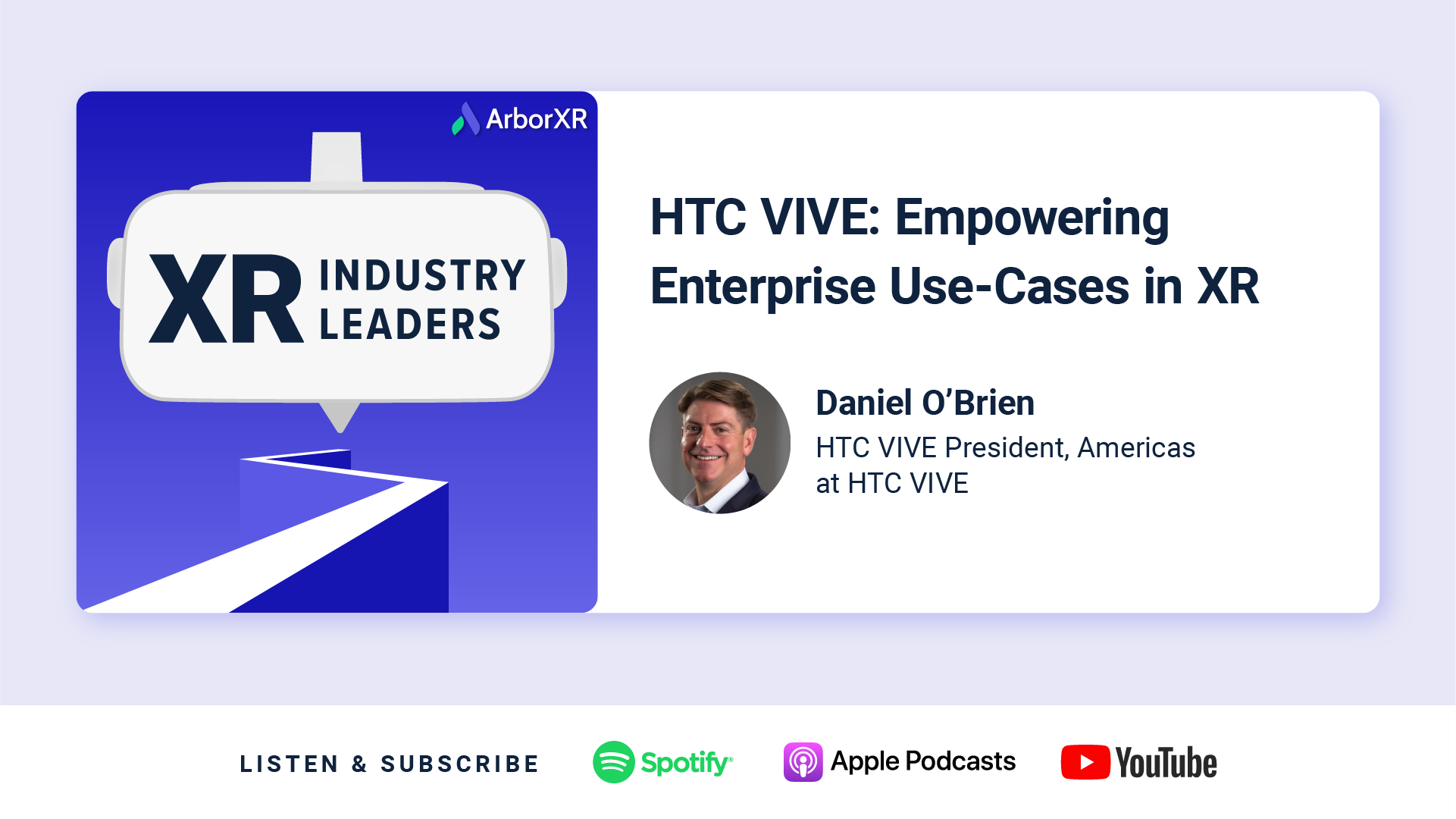
HTC VIVE: Empowering Enterprise Use-Cases in XR
HTC evolved from a mobile device manufacturer to a leader in XR technology. Explore HTC’s transformative impact in VR tech for enterprises and beyond.

Delta Air Lines: Revolutionizing Airline Training with VR
Delta Air Lines launches VR training for new employees and technicians. Learn about the program’s transformative impact – including cost savings, operational efficiency and employee safety.
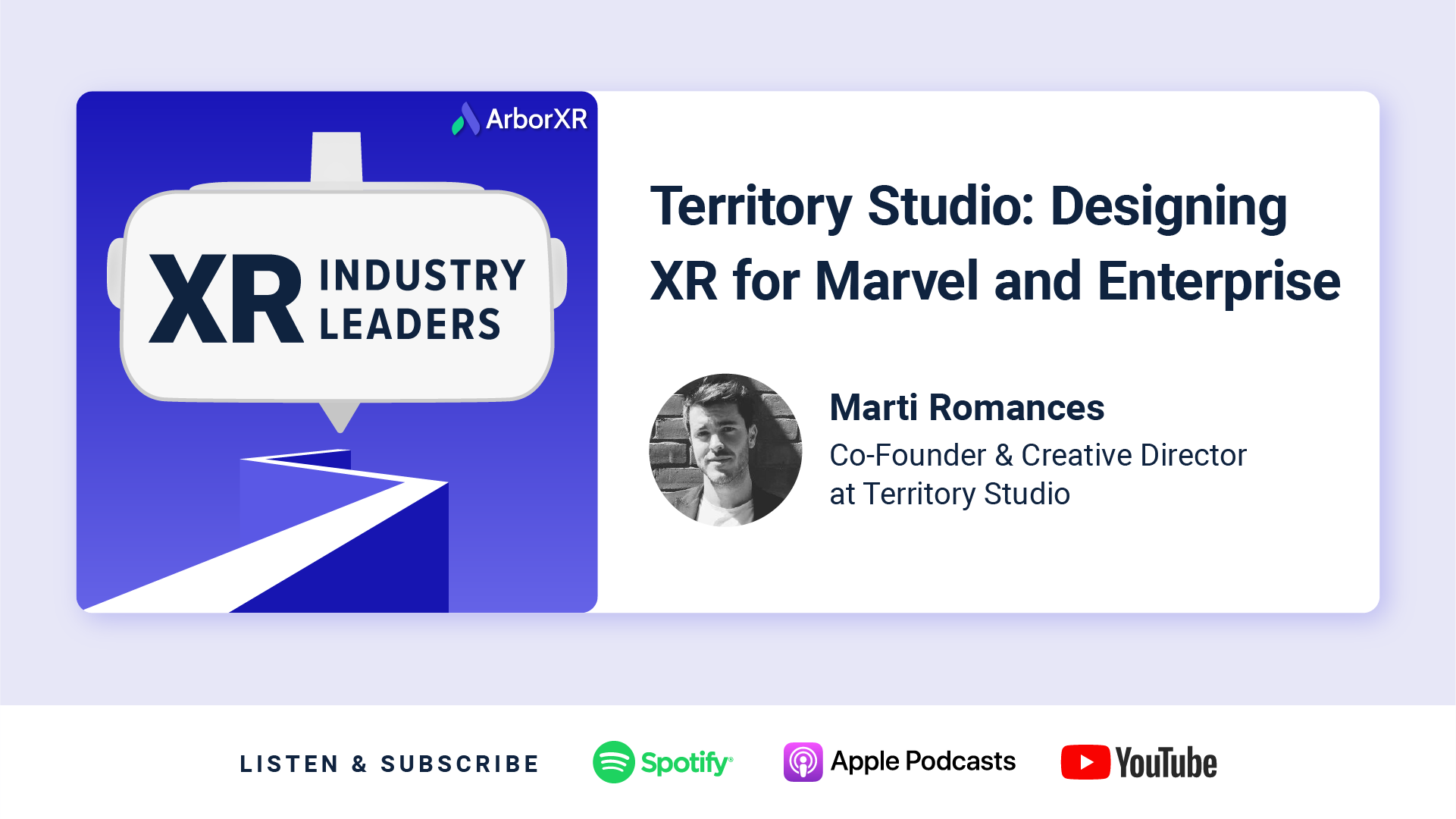
Territory Studio: Designing XR for Marvel and Enterprise
Learn how Territory Studio imagines, designed and implemented AR and MR experiences in major motion pictures and for major Enterprise companies.

Lenovo: Unlocking Enterprise Potential with VR
Dive into the dynamic world of extended reality (XR) with Lenovo’s Vishal Shah and Jason McGuigan as they unravel Lenovo’s new enterprise XR solution: the Lenovo ThinkReality VRX.
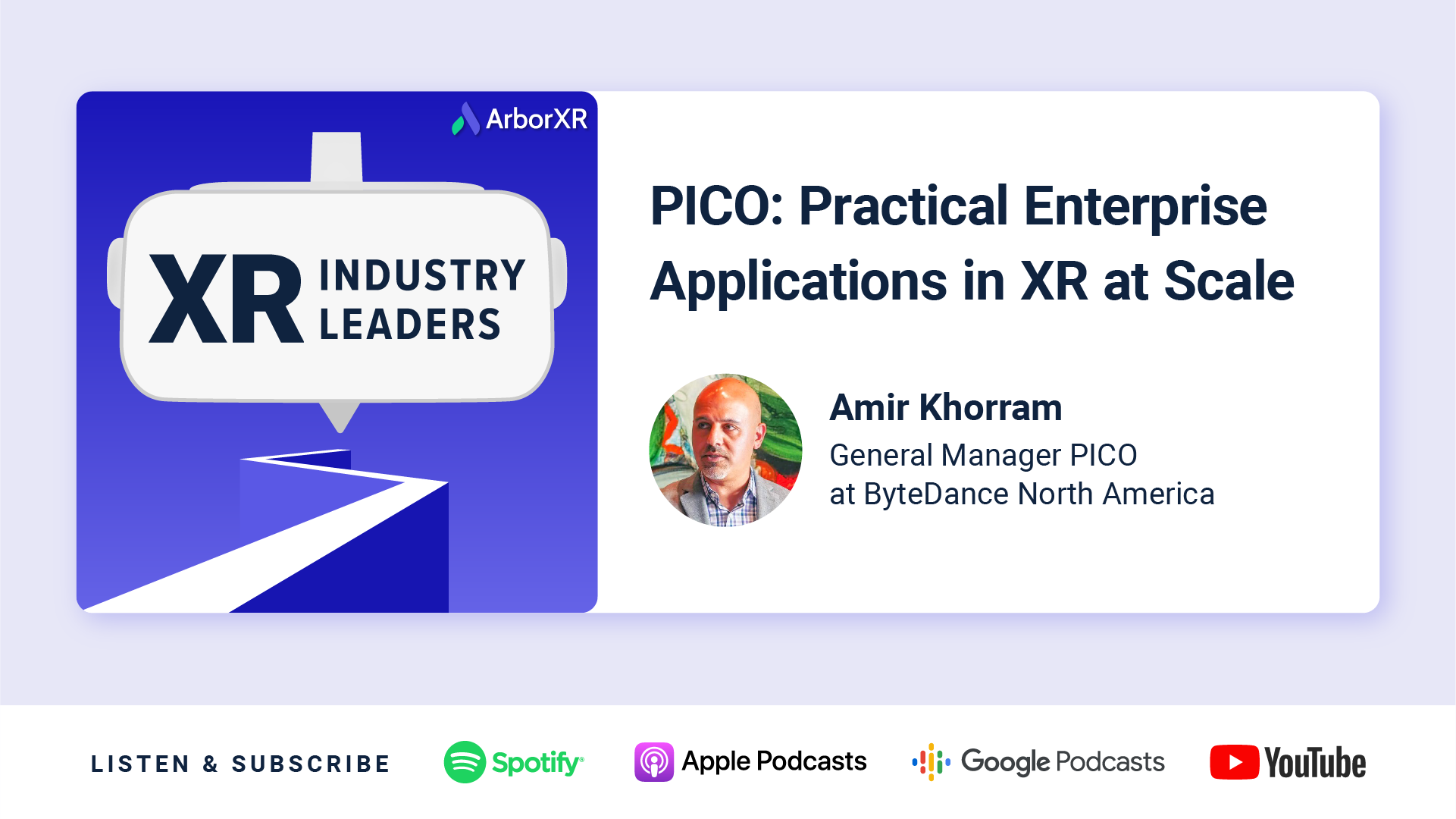
PICO: Practical Enterprise Applications in XR at Scale
Explore XR’s future with PICO’s Amir Khorram in XR Industry Leaders. Insightful discussion on VR enterprise solutions, partnerships, and industry adoption.
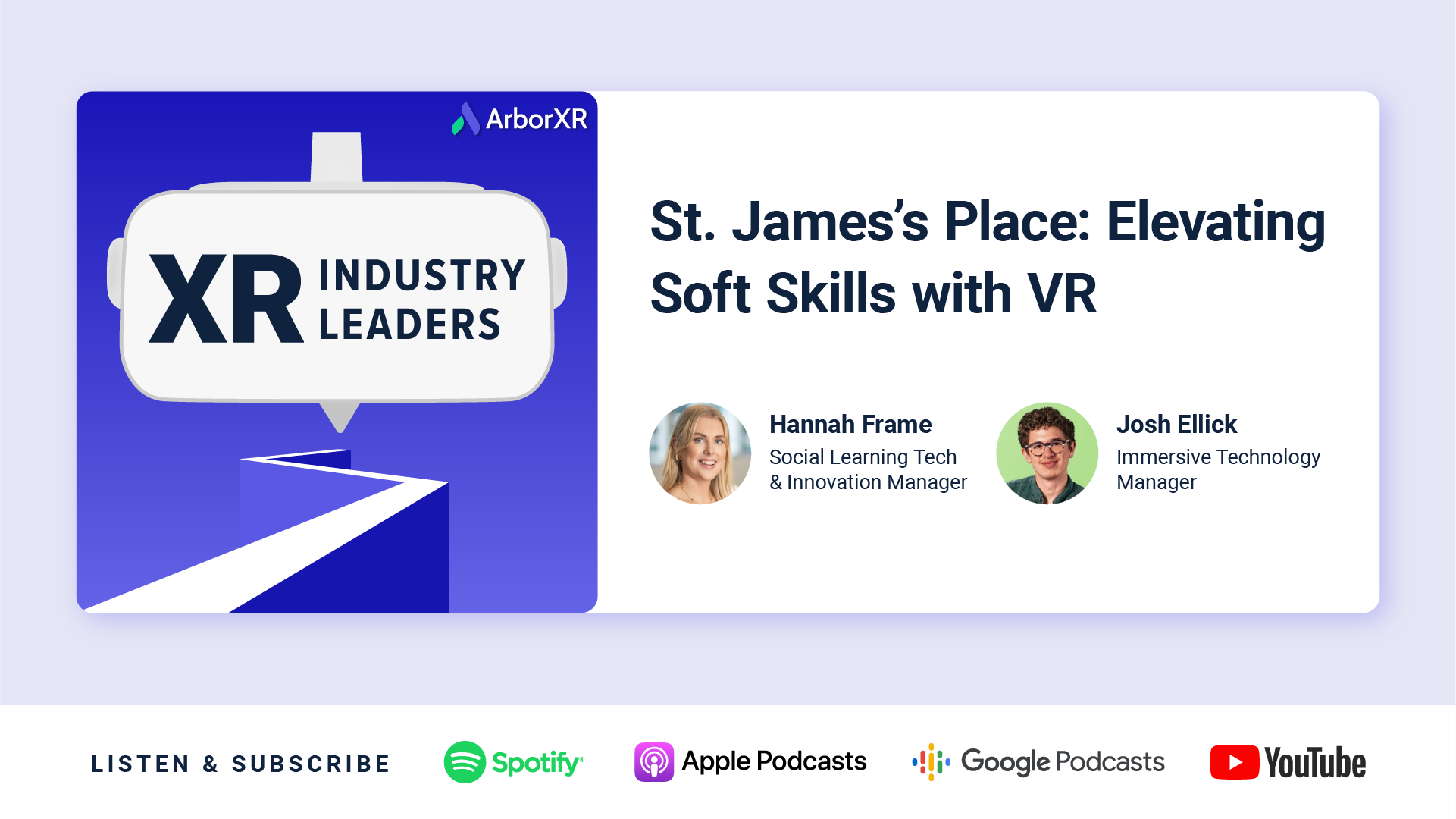
St. James’s Place: Elevating Soft Skills with VR
Hannah & Josh St. James’s Place discuss using VR to train advisor soft skills, challenges of managing headsets at scale, lessons on user adoption, and content development.
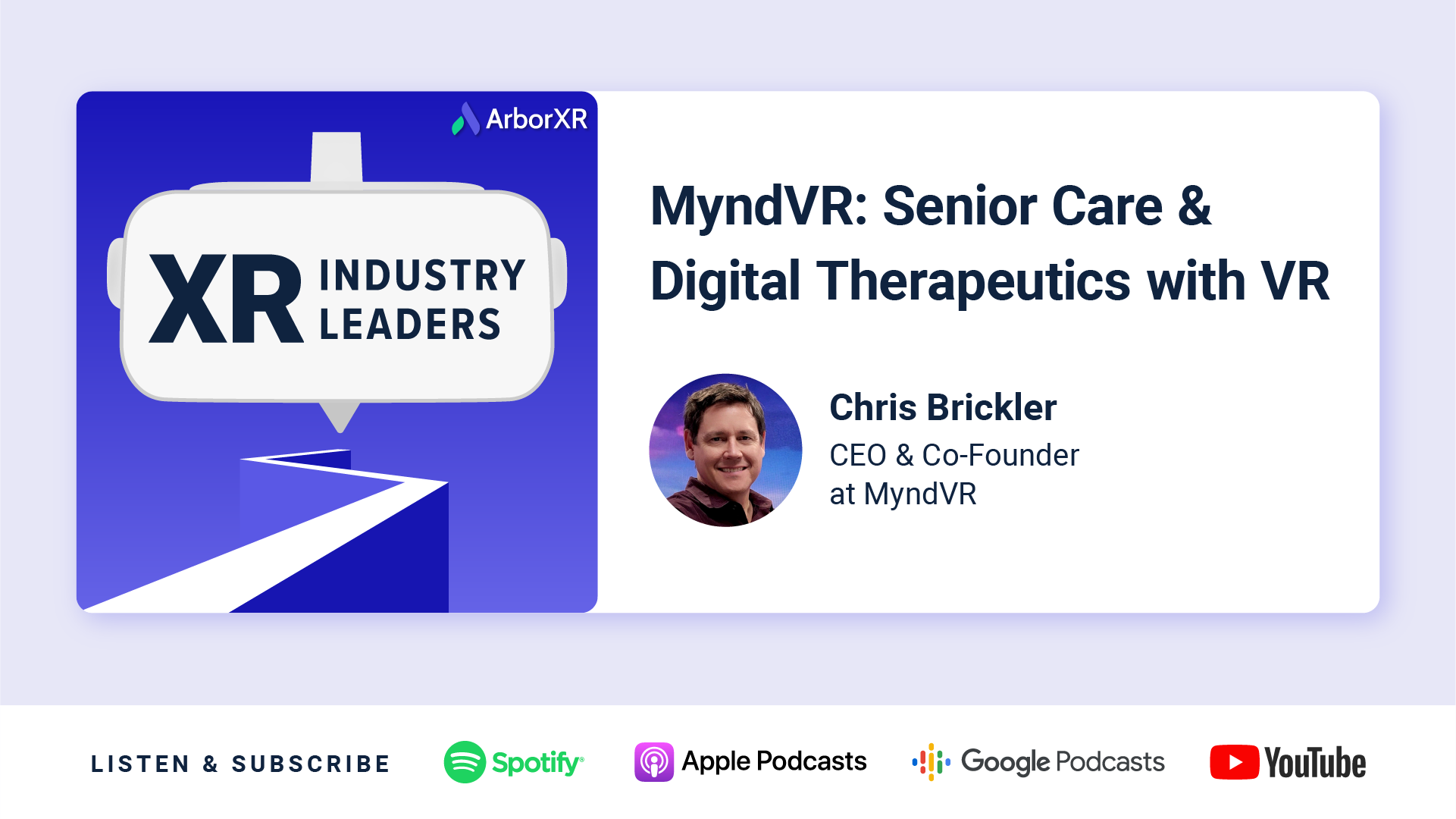
MyndVR: Senior Care and Digital Therapeutics with VR
Chris Brickler shares how VR therapy improves memories and care for elderly patients, and the challenges of scaling VR across health senior care facilities.
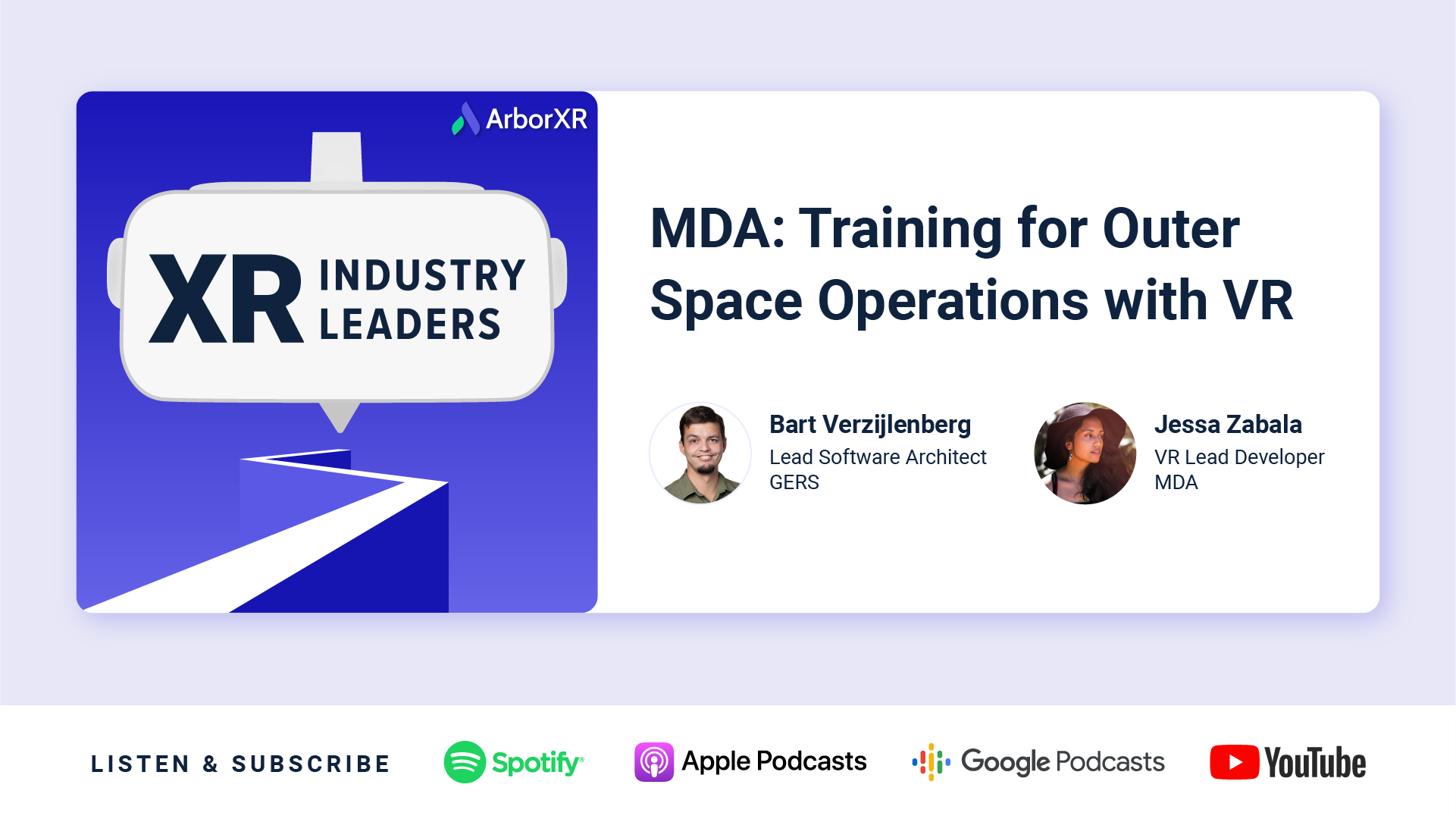
MDA: Training For Outer Space Operations with VR
Discover how MDA leverages VR for astronaut training, mission planning, and onboarding. Gain valuable insights into implementing immersive technologies at scale.
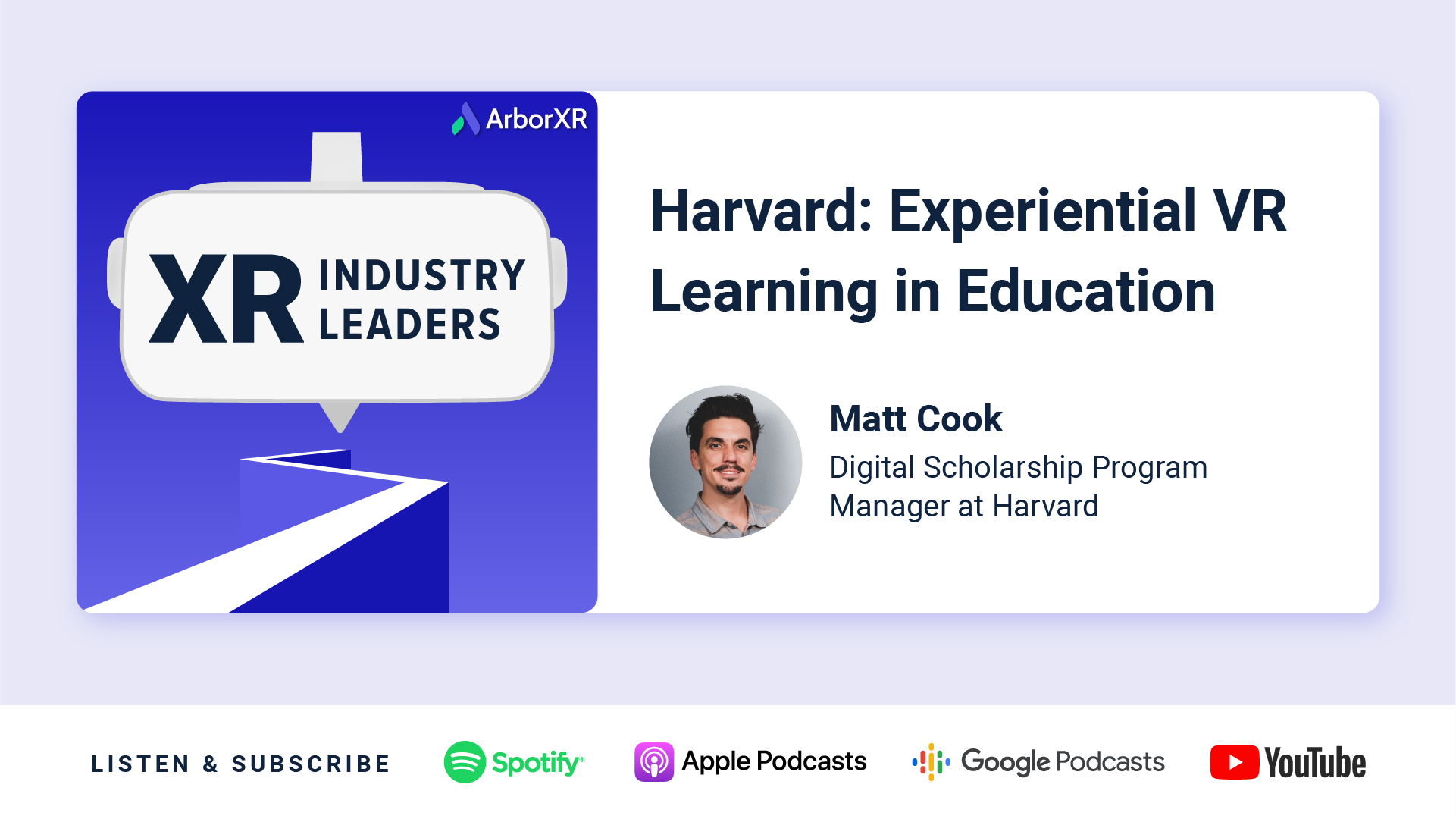
Harvard: Experiential VR Learning in Education
Matt Cook from Harvard joins us to discuss how virtual & augmented reality are redefining higher education through customized immersive experiences.
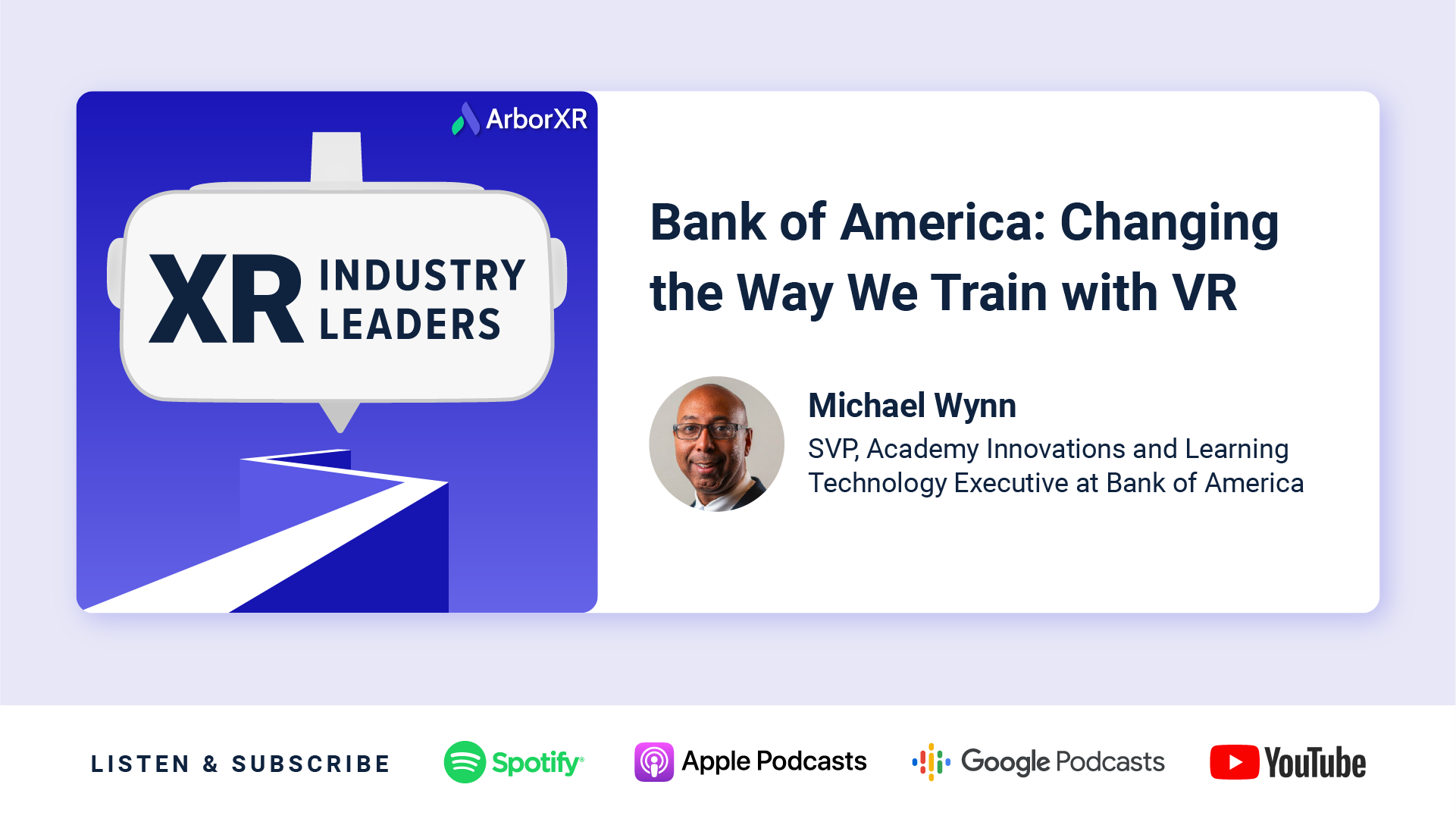
Bank of America: Changing the Way We Train with VR
Explore how Bank of America is revolutionizing training with VR, enhancing employee engagement, overcoming challenges with VR, and redefining corporate education.
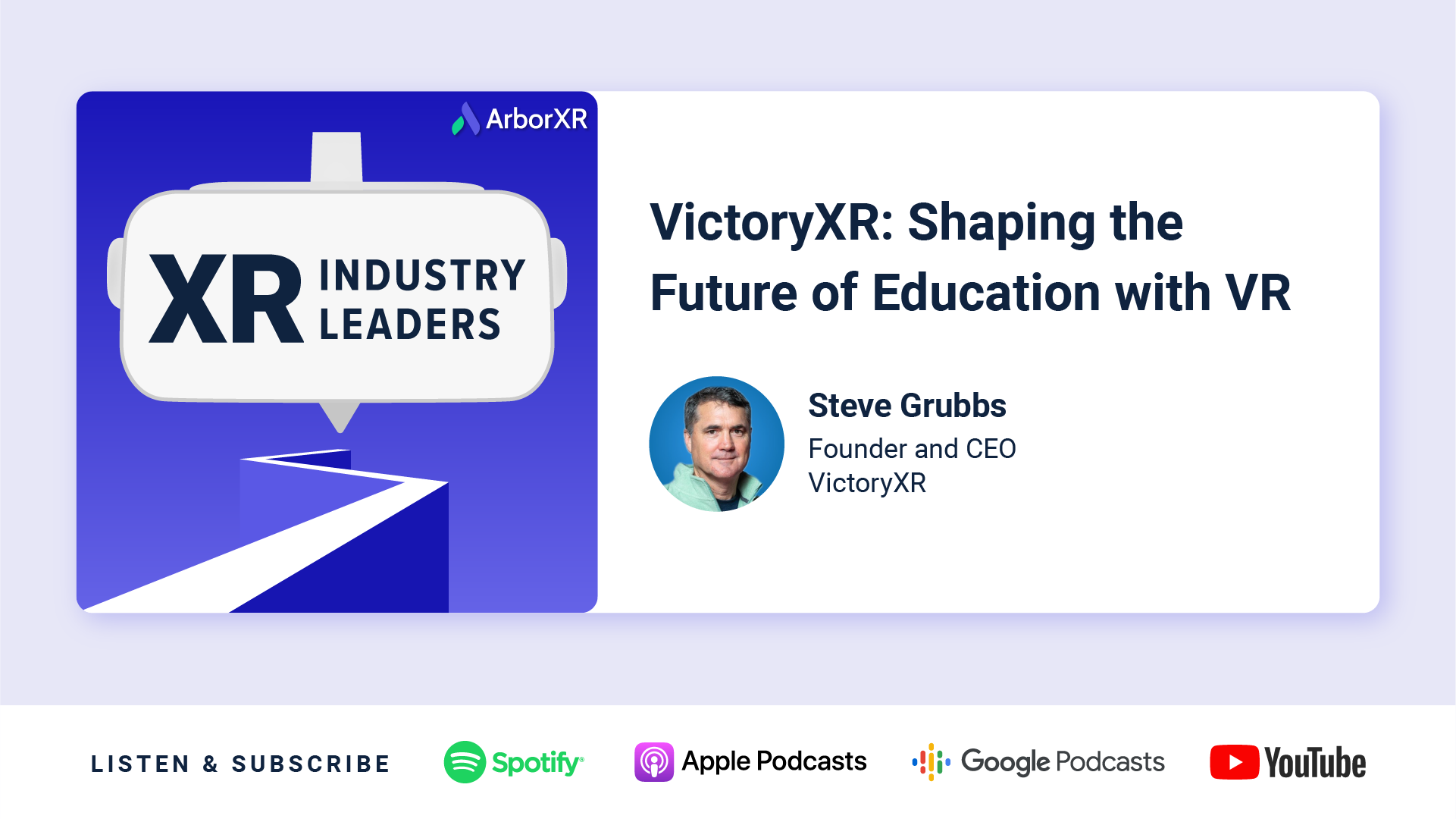
VictoryXR: Shaping the Future of Education with VR
VictoryXR CEO Steve Grubbs discusses creating virtual reality curriculums for education, working closely with Meta, and the future of immersive technology for teachers and students.
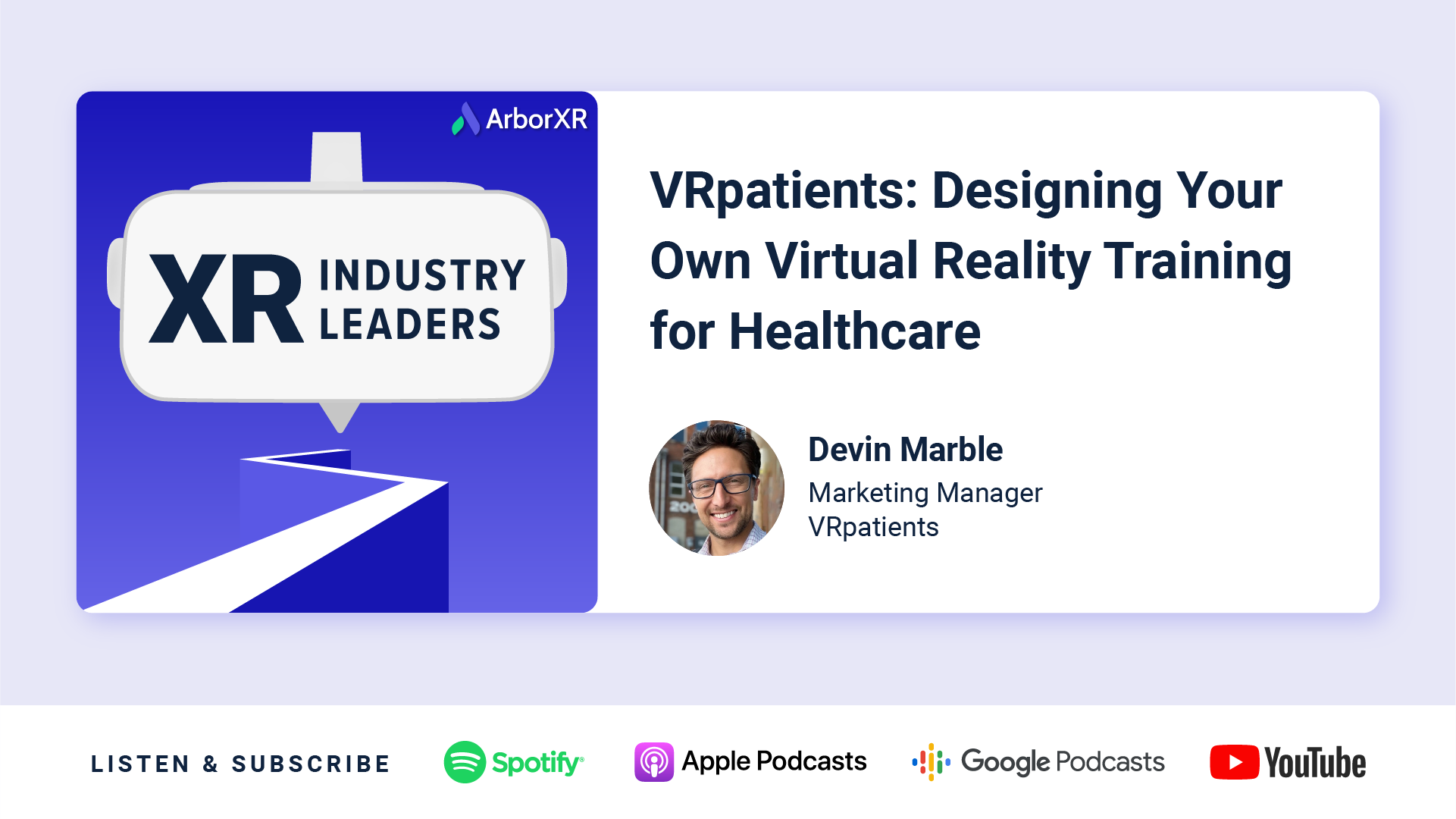
VRpatients: Designing Your Own VR Training for Healthcare
Learn how VRpatients creates VR simulations that instructors can customize to give trainees real-life experiences in healthcare.
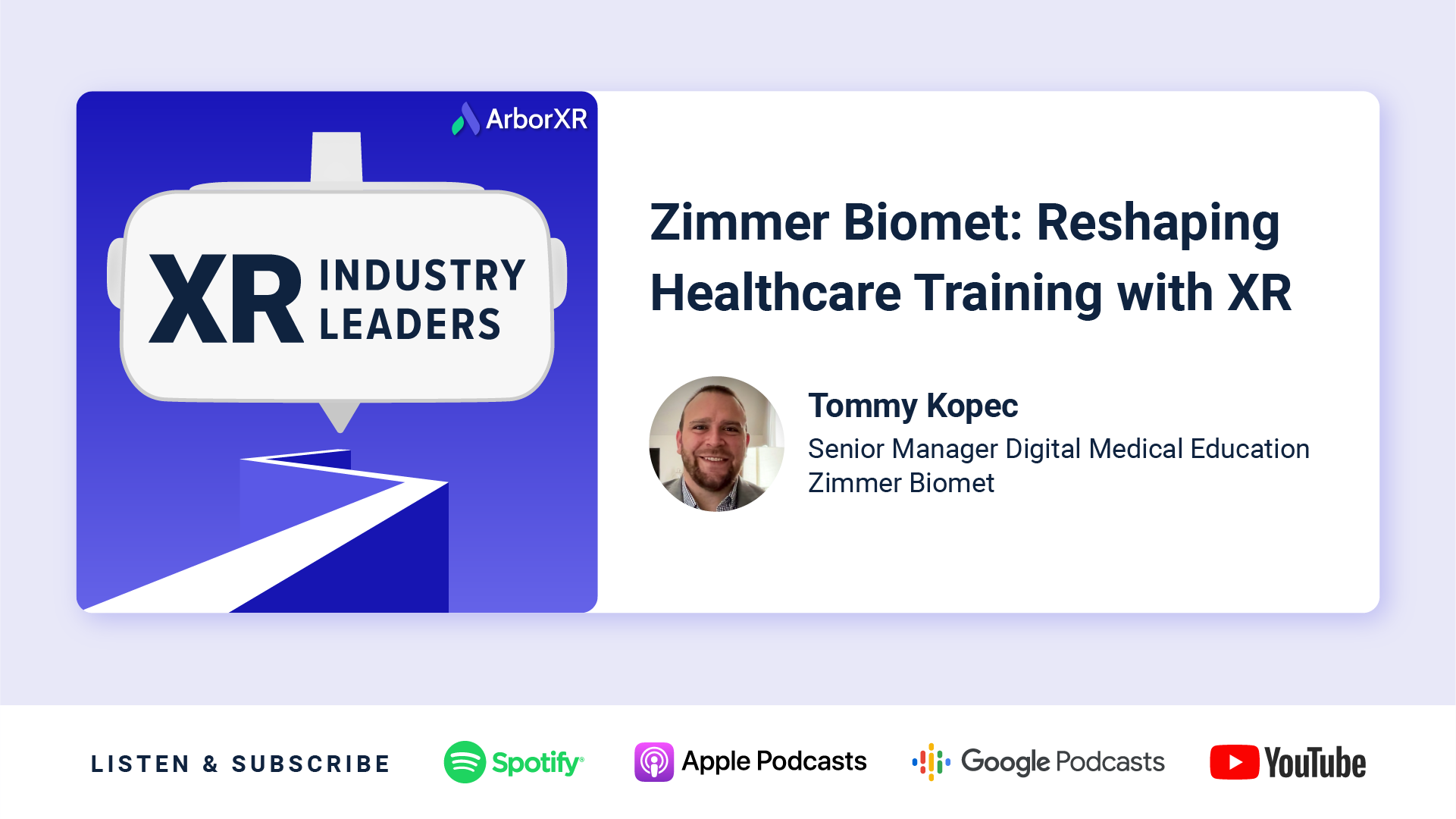
Zimmer Biomet: Reshaping Healthcare Training with AR and VR
If you’re interested in how XR will shape medicine going forward, this is a must-listen episode. Tommy Kopec of Zimmer Biomet provides an insider’s perspective on VR’s transformative potential for surgery, training, and beyond.
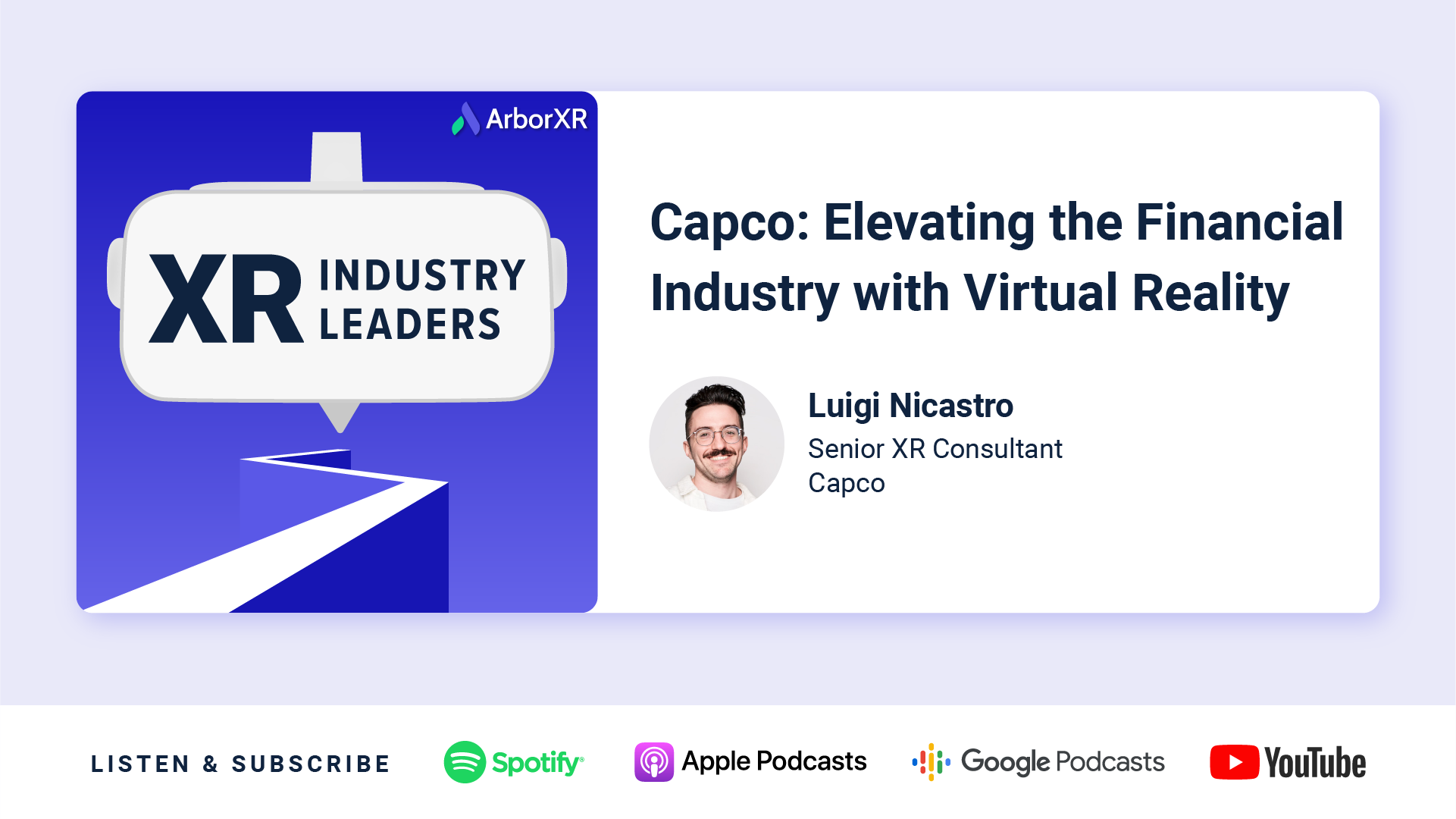
Capco: Elevating the Financial Industry with Virtual Reality
Explore how Capco revolutionizes the financial industry with virtual reality. Discover their success, challenges, and predictions for VR’s impact.
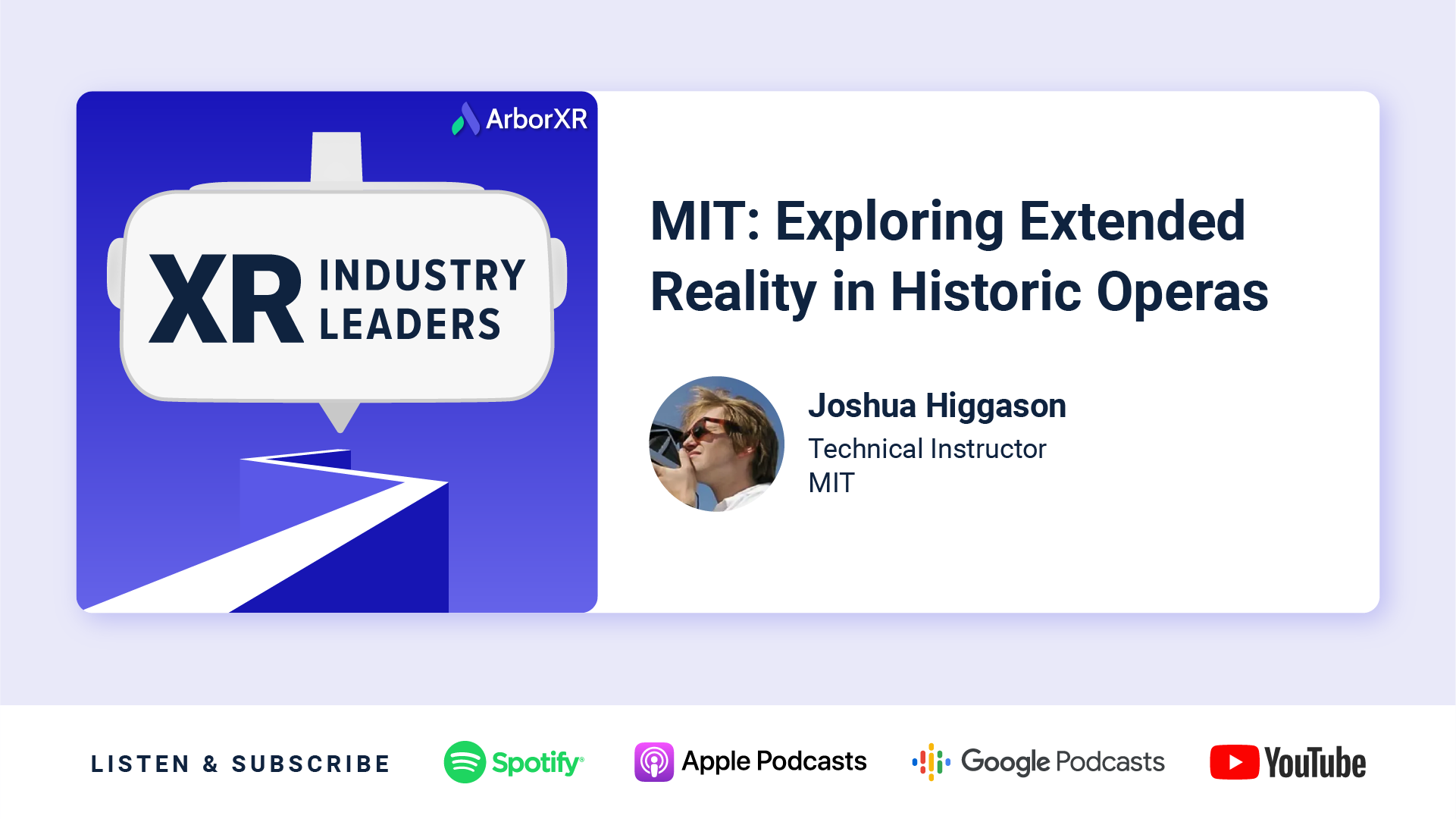
MIT: Exploring Extended Reality in Historic Operas
Discover how MIT uses AR and VR to create immersive experiences for historic operas. We discuss XR in education, challenges and advice for new adopters, and more.
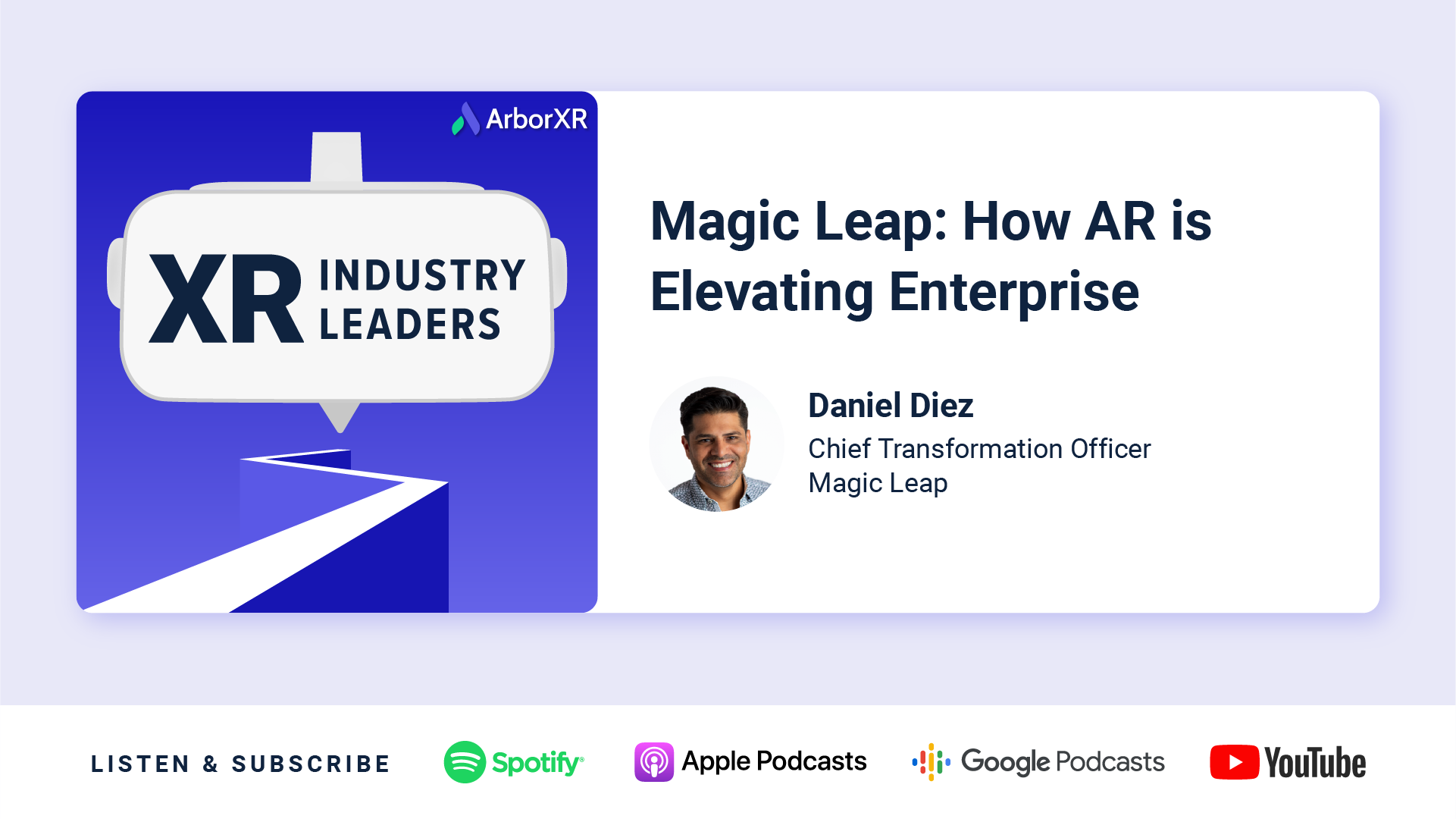
Magic Leap: How Augmented Reality is Elevating Enterprise
Discover how Magic Leap is taking augmented reality to the next level with their enterprise-focused hardware, including real-world statistics and use cases.
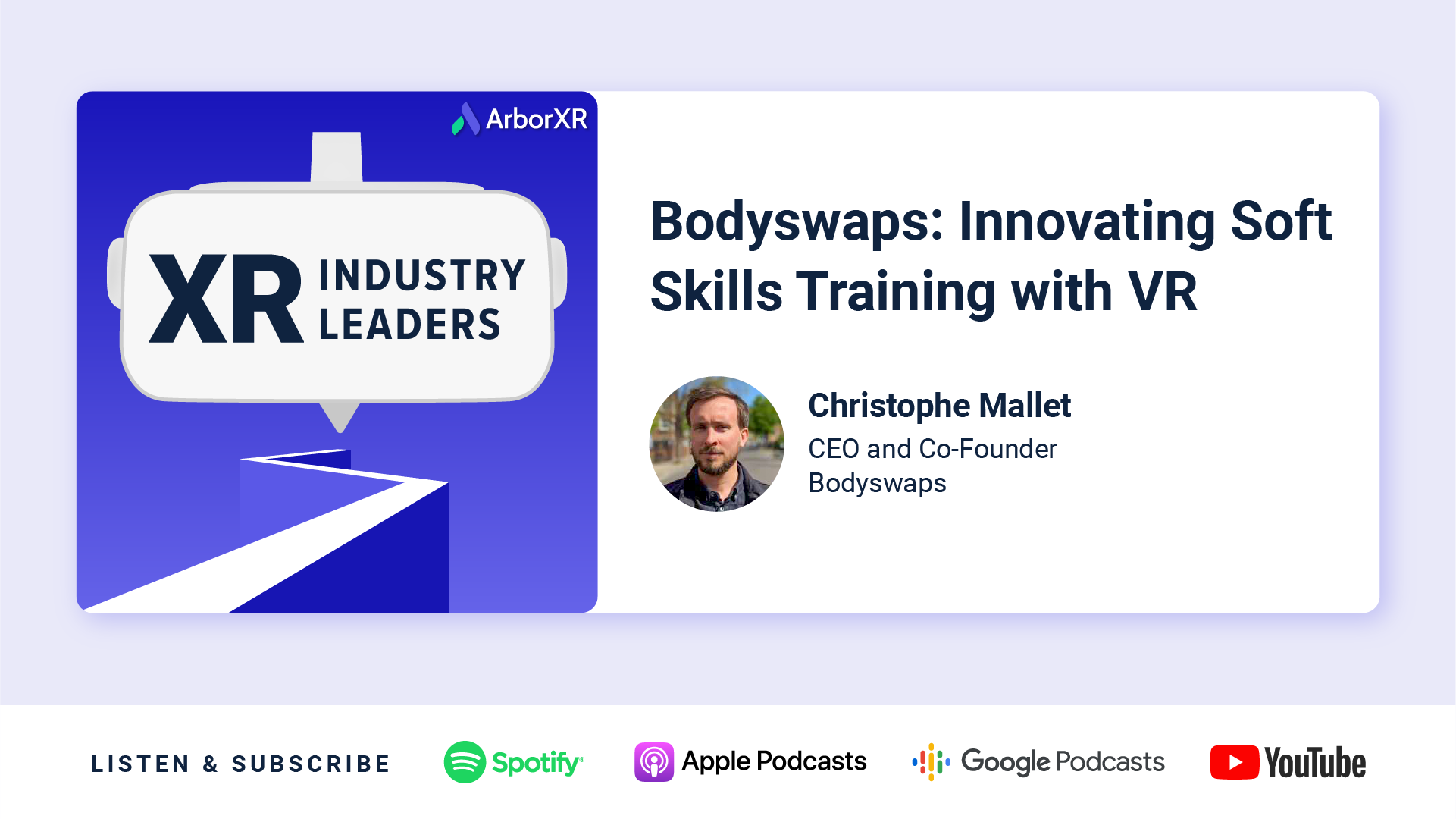
Bodyswaps: Innovating Soft Skills Training with Virtual Reality
Discover the future of VR in education with Bodyswaps. Learn how VR elevates soft skills training, and how to implement VR technology effectively.
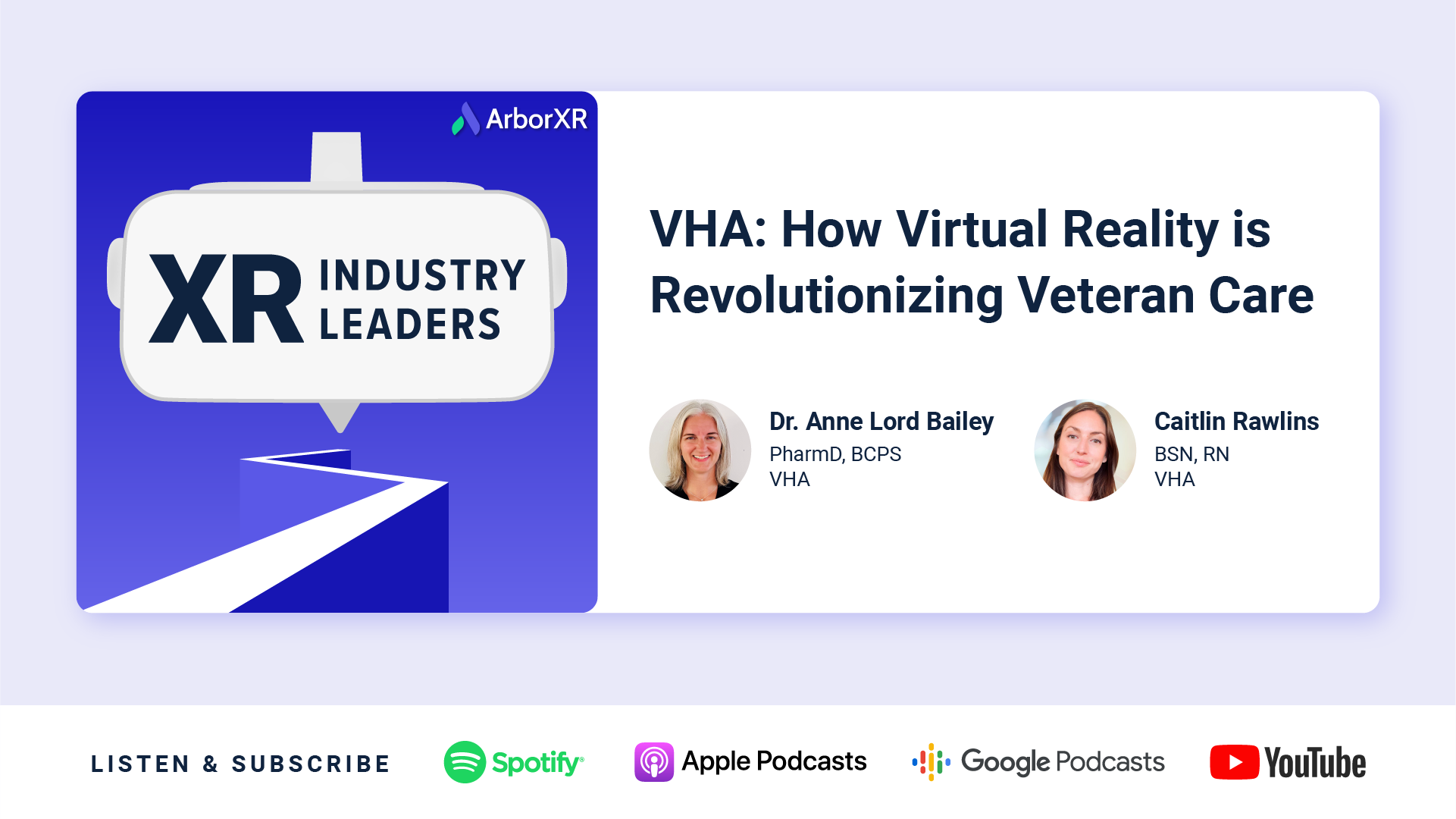
VHA: How Virtual Reality is Revolutionizing Veteran Care
Discover how the VHA is using virtual reality to improve the lives of veterans with pain management, mental health, and overall well-being.
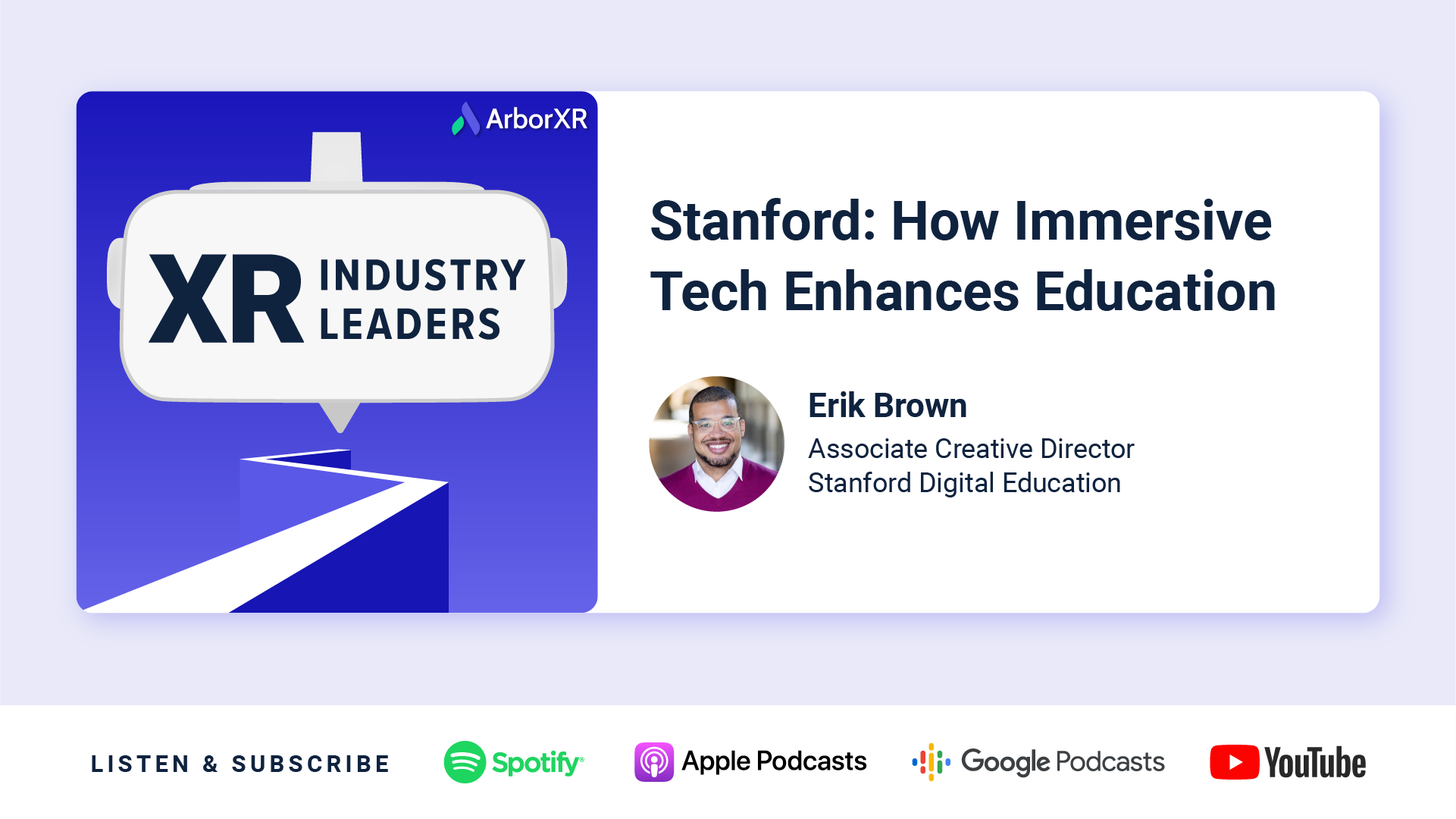
Stanford: How Immersive Technology Enhances Education
Erik Brown discusses how Stanford uses virtual reality for education, empathy in VR, challenges with creating and managing XR content, and more.
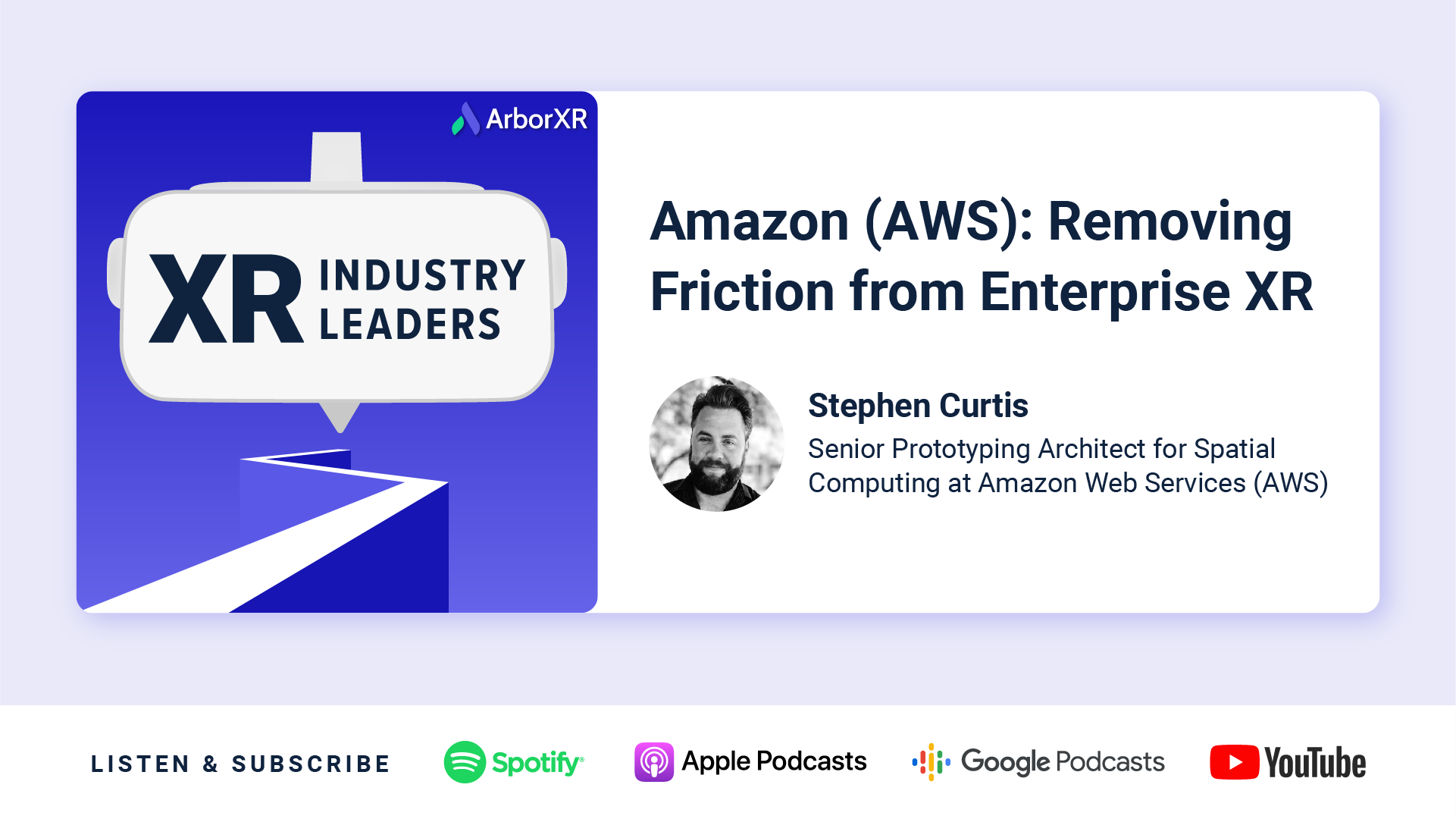
Amazon (AWS): Removing Friction from Enterprise XR
Stephen Curtis from AWS discusses how XR solves enterprise friction, advice for new adopters, XR content authoring, XR device management and more.

WestRock: How XR is Accelerating Manufacturing
XR champion Scott Burkey discusses the impact AR and VR is having on manufacturing, challenges implementing new technology, and advice for using XR in business.
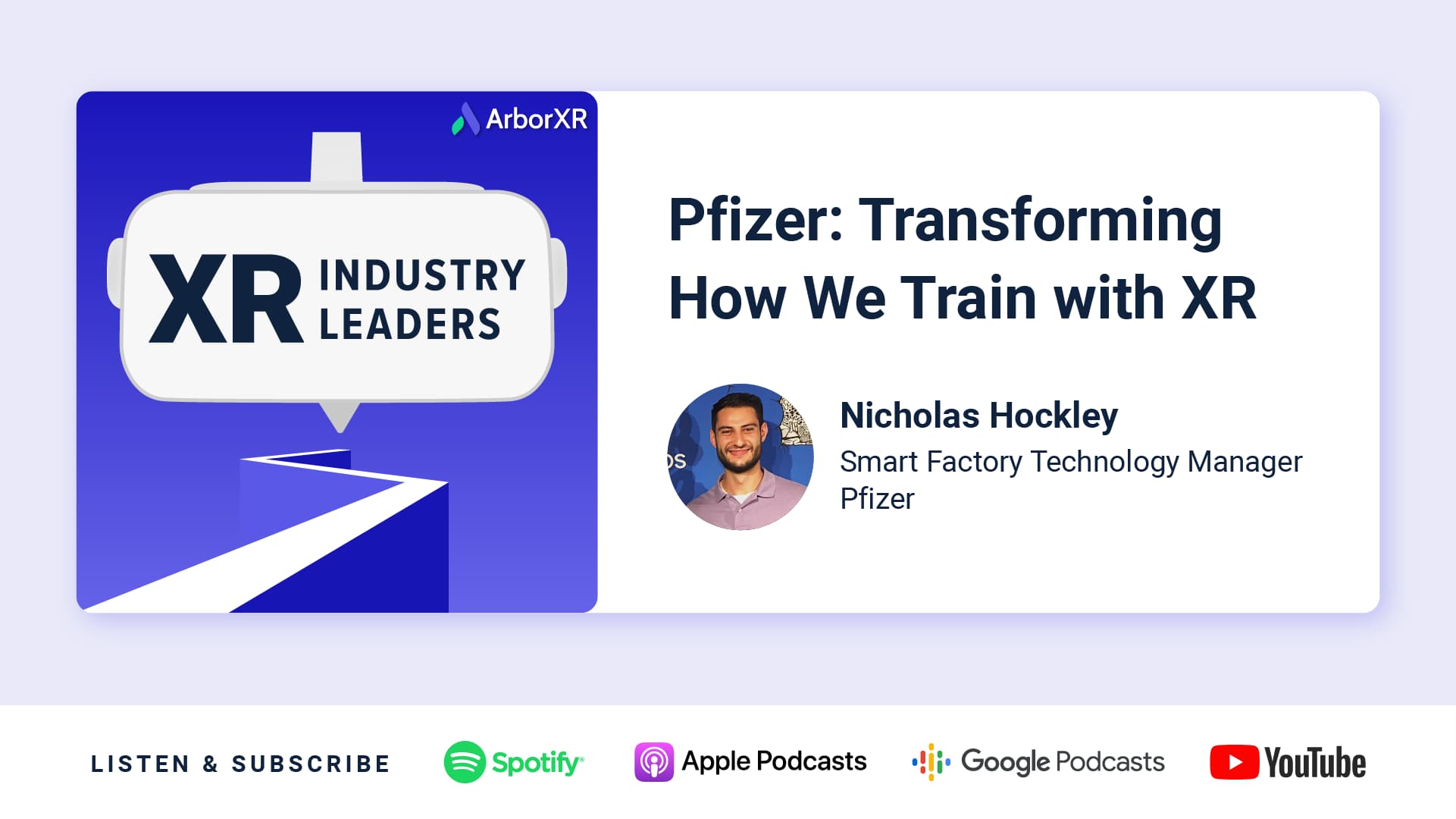
Pfizer: Transforming How We Train with XR
XR leader Nicholas Hockley discusses how XR transformed the way Pfizer trains, challenges with AR/VR content, moving from a pilot program to scale, and more.
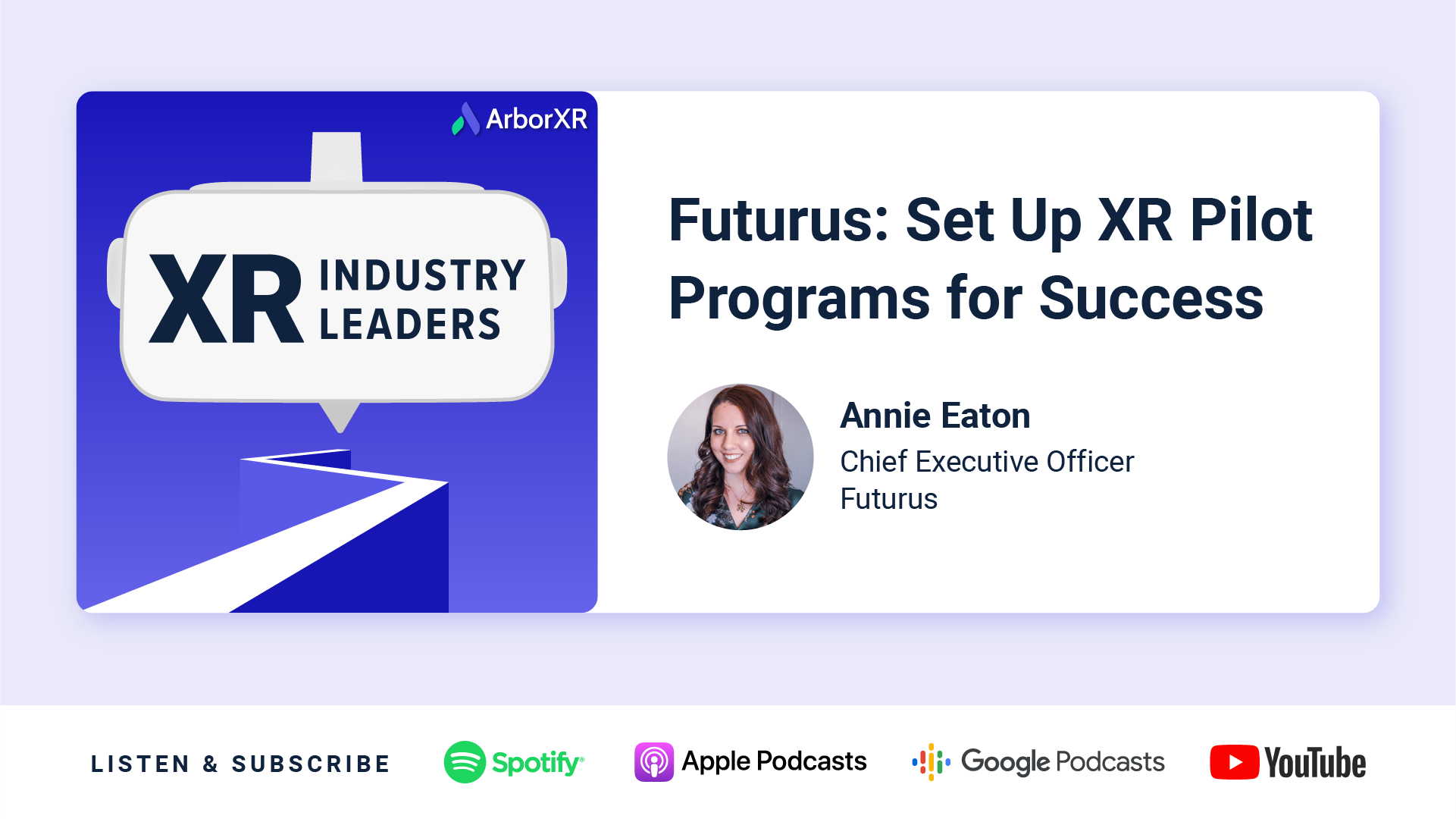
Futurus: Set Up XR Pilot Programs for Success
Futurus CEO Annie Eaton discusses creating AR/VR content, how to set up XR pilot programs for success, challenges in XR, advice for new adopters, and more.
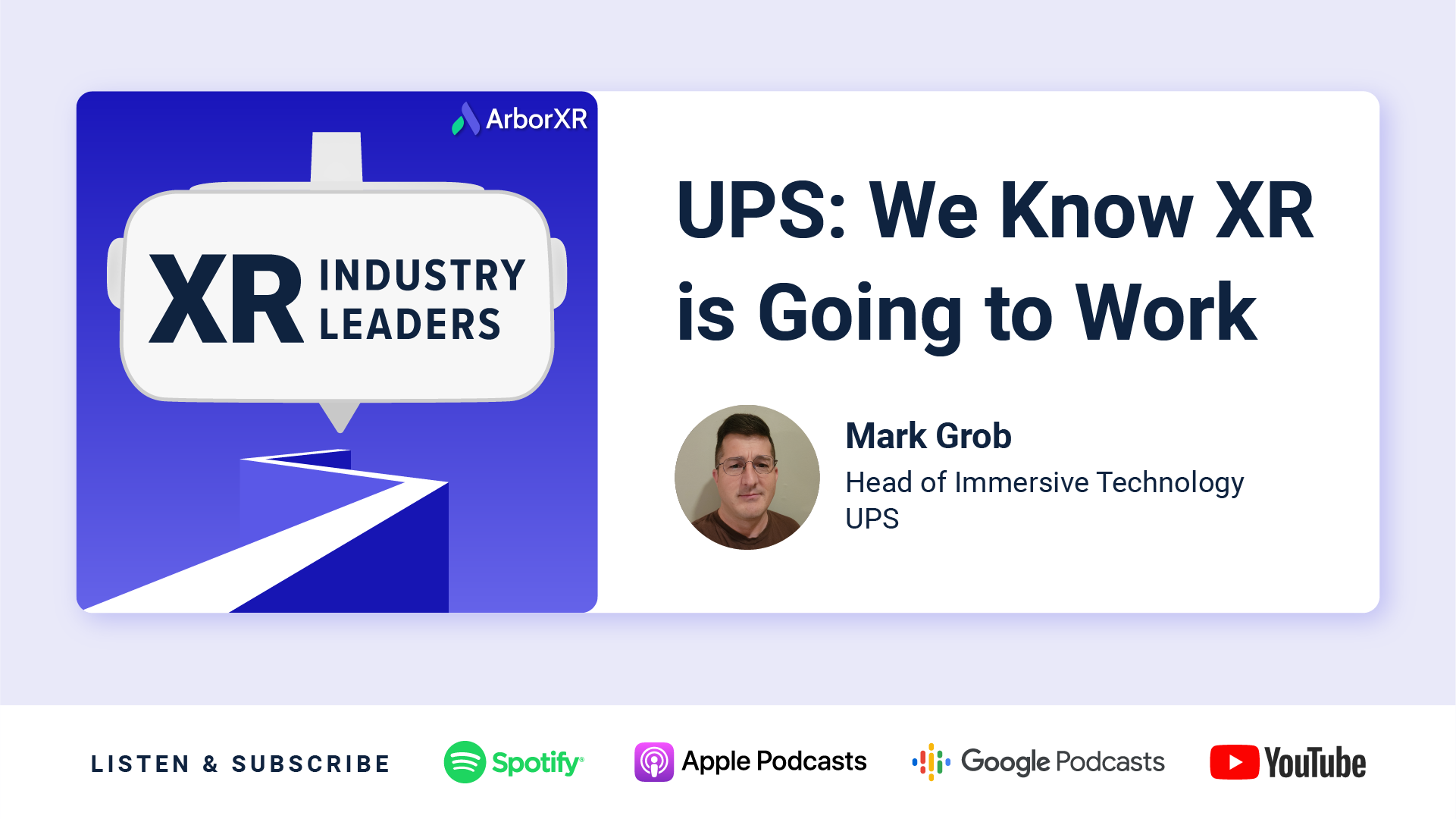
UPS: We Know XR is Going to Work
Learn how UPS built XR training as a practice. We discuss using AR/VR in business, challenges and benefits of XR training, advice for new adopters & more.
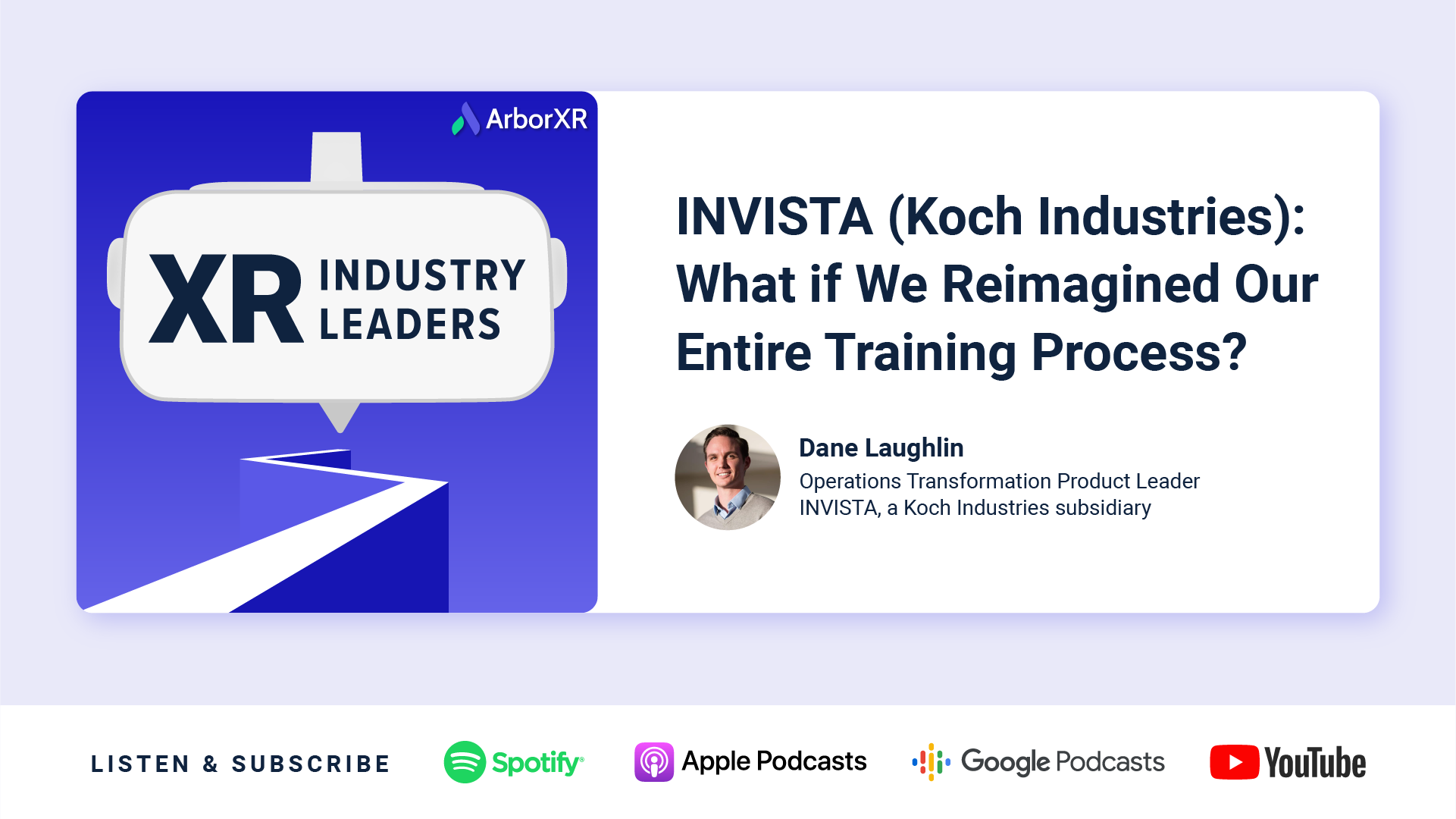
INVISTA (Koch Industries): What if We Reimagined Our Entire Training Process?
Learn how XR is transforming INVISTA (Koch). We discuss using AR/VR in business, challenges and benefits of XR training, strategy to scaling XR adoption & more.

PwC: Reimagining the Workplace with XR
Explore VR’s transformative impact with PwC’s Alex Rühl, from empathy training to faster learning and scalable innovation.

Snap: Trailblazing the Next Era of XR
Explore the future of XR with Andrew Seleznov from Snap, as he discusses his recent projects and impactful partnerships with global brands.

Parker University: Advancing Chiropractic Training with VR
Learn how XR is transforming healthcare education at Parker University, using VR/AR for patient simulations, psychological safety, and anatomy.

Energy Safety Canada: Fueling the Future Workforce with XR
Explore how Energy Safety Canada is using XR to address an anticipated workforce shortage across the country’s energy industry.

USC: Virtual Reality & ADHD, PTSD and More
Discover Dr. Skip Rizzo’s groundbreaking work in VR therapy for PTSD, ADHD, autism, and more in this inspiring episode of XR Industry Leaders.

SDSU: Expanding Rural Education with VR
Learn how SDSU uses XR to expand educational access in rural areas, integrating VR into subjects like nursing and chemistry to prepare students for the future.

RTC: The Future of Learning and XR’s Role in Education
Explore one of the largest XR deployments in the world of education. Learn how RTC Antwerpen rolled out a VR program in 700 schools, benefiting 150,000 students.

Qualcomm: Enabling the XR Industry
Discover Qualcomm’s role in XR tech’s past, present, and future. Brian Vogelsang discusses XR’s impact on enterprises, AI integration, and key collaborations.

HTC VIVE: Empowering Enterprise Use-Cases in XR
HTC evolved from a mobile device manufacturer to a leader in XR technology. Explore HTC’s transformative impact in VR tech for enterprises and beyond.

Delta Air Lines: Revolutionizing Airline Training with VR
Delta Air Lines launches VR training for new employees and technicians. Learn about the program’s transformative impact – including cost savings, operational efficiency and employee safety.